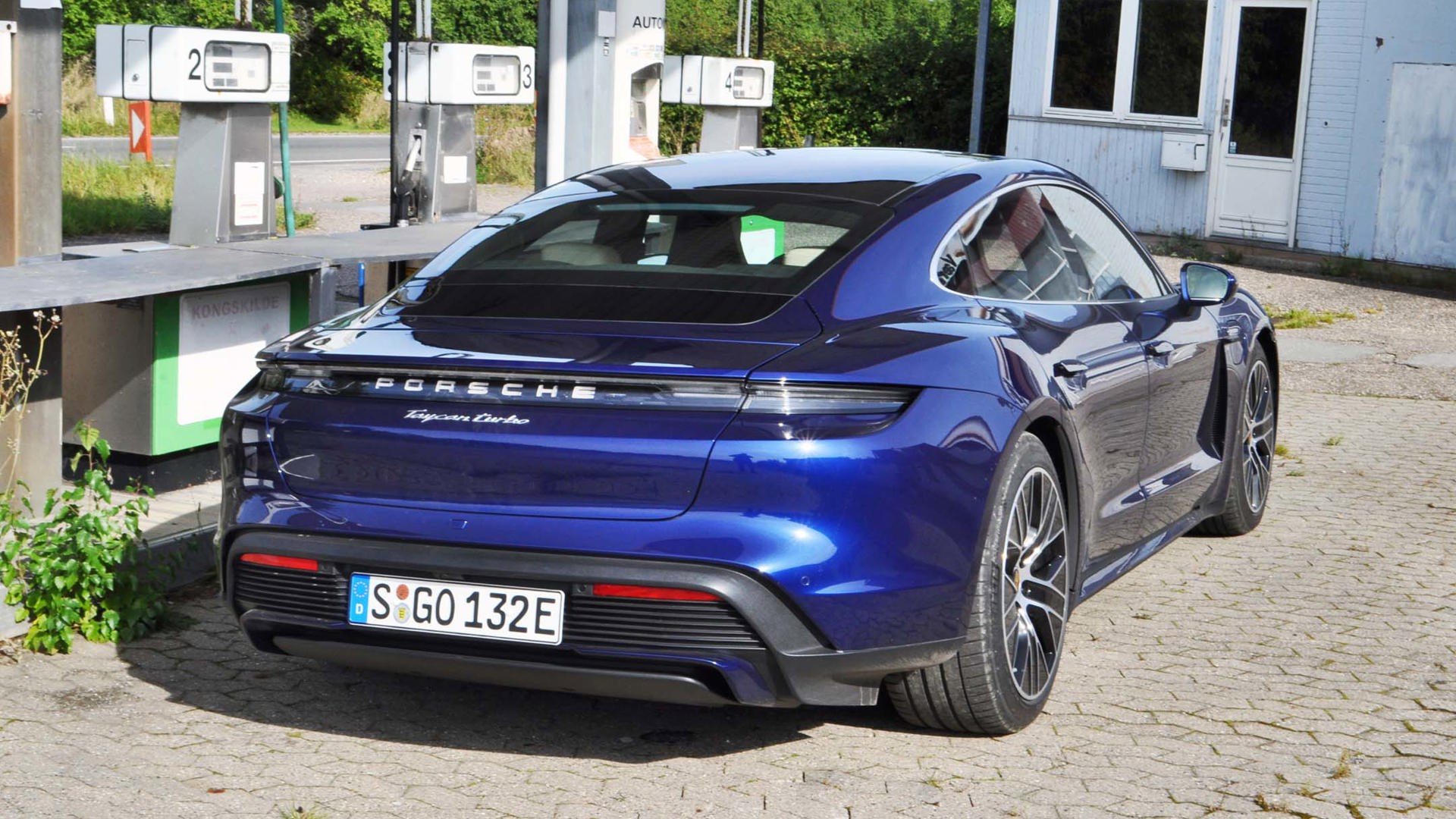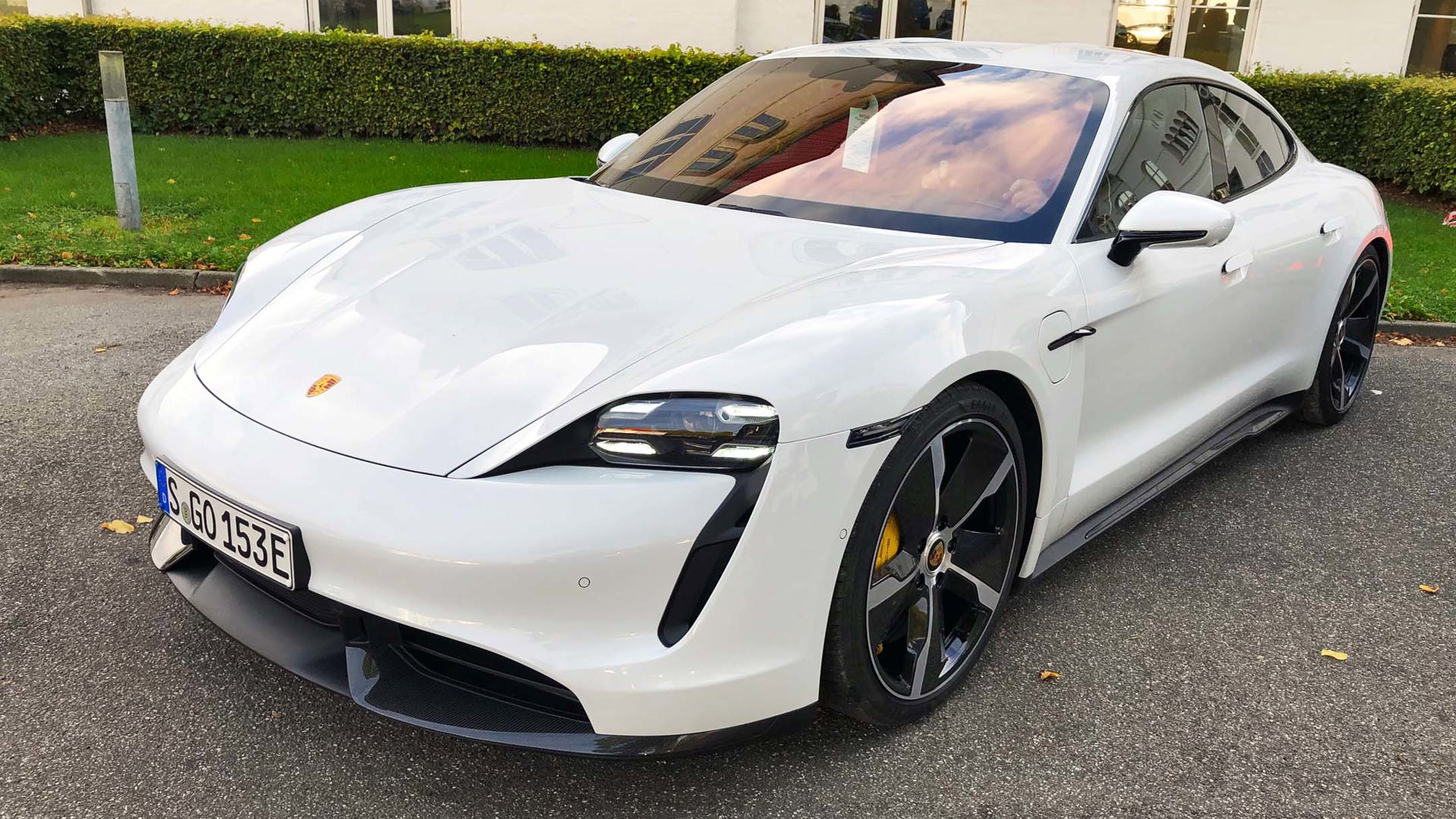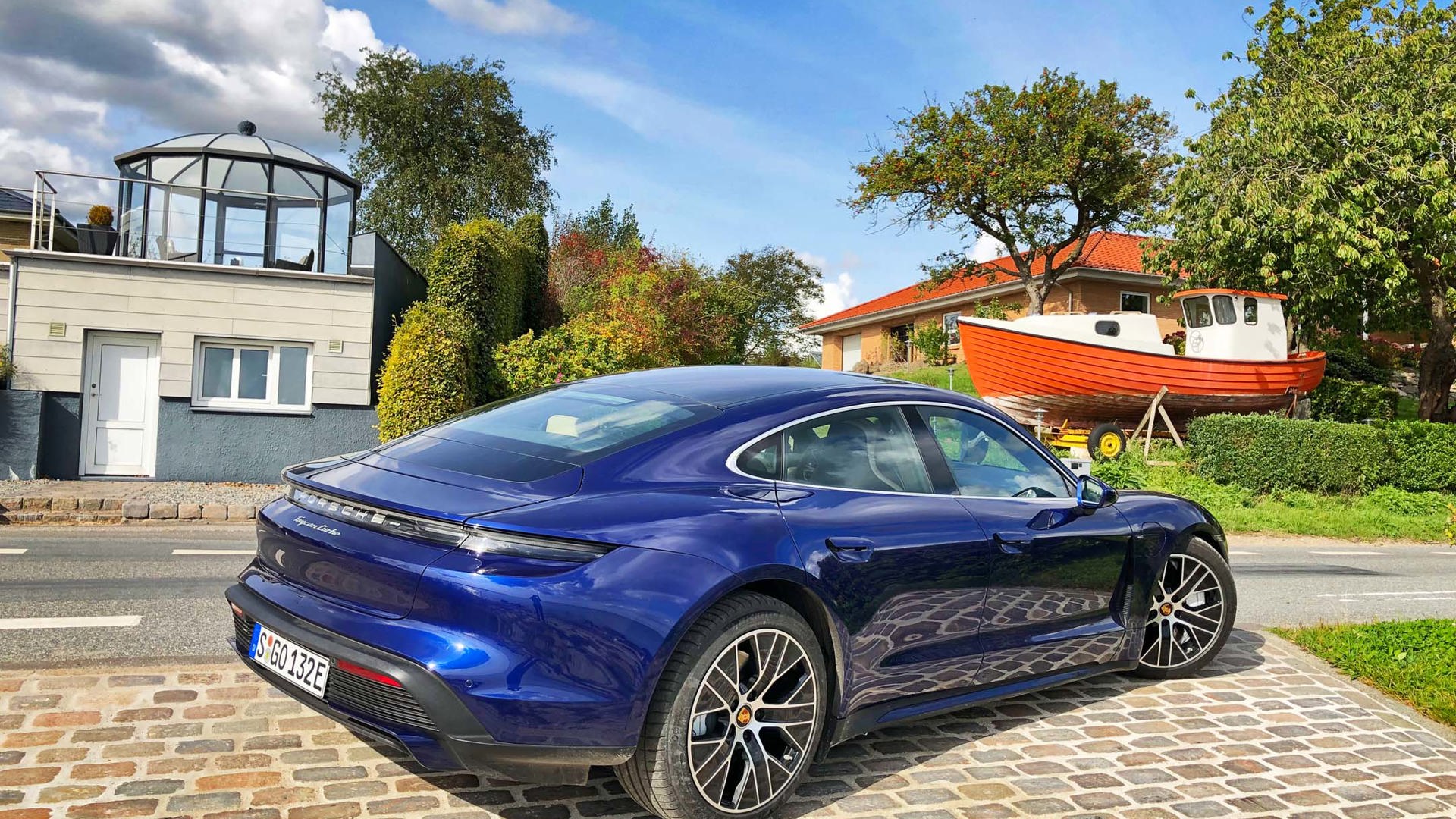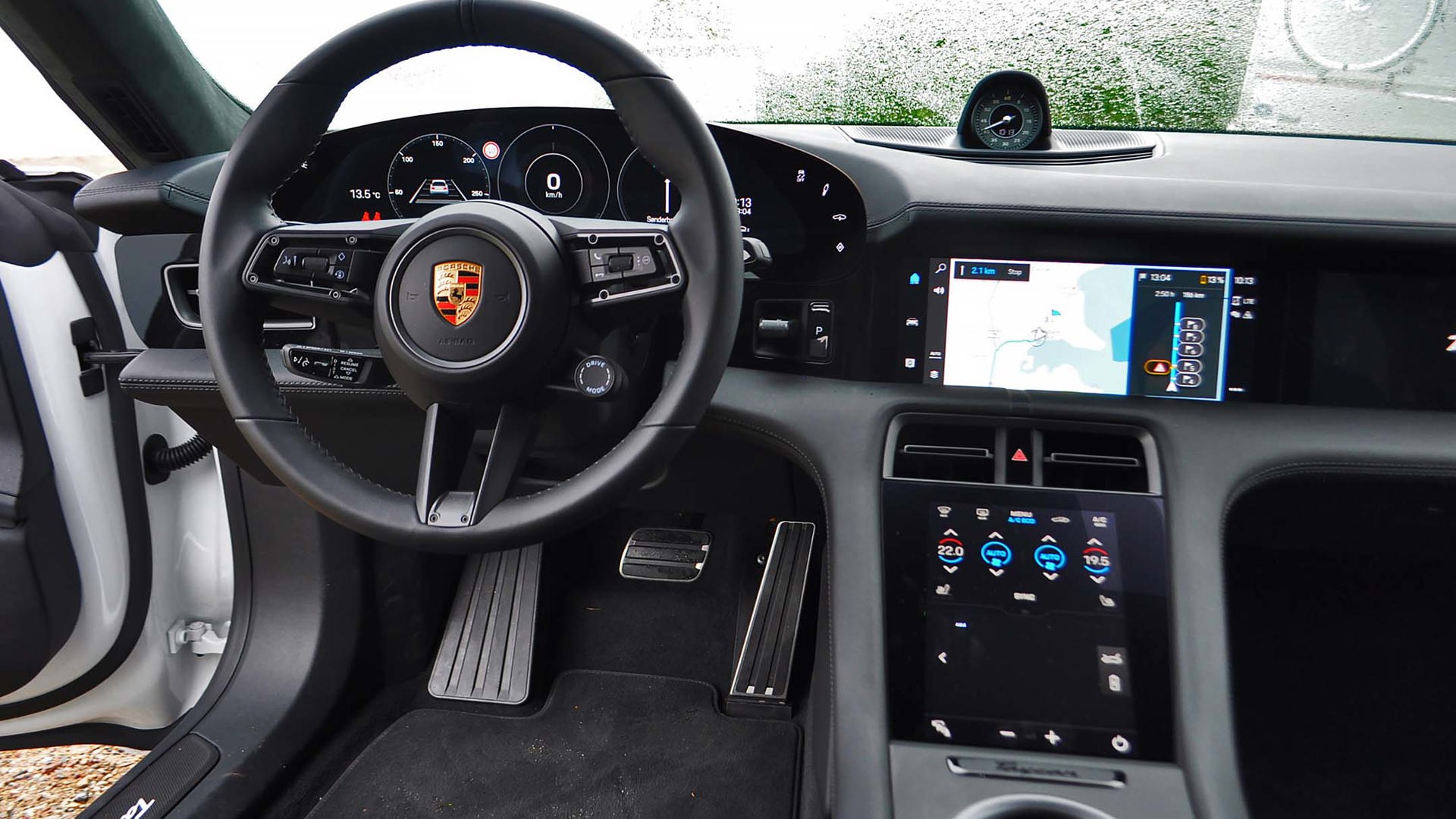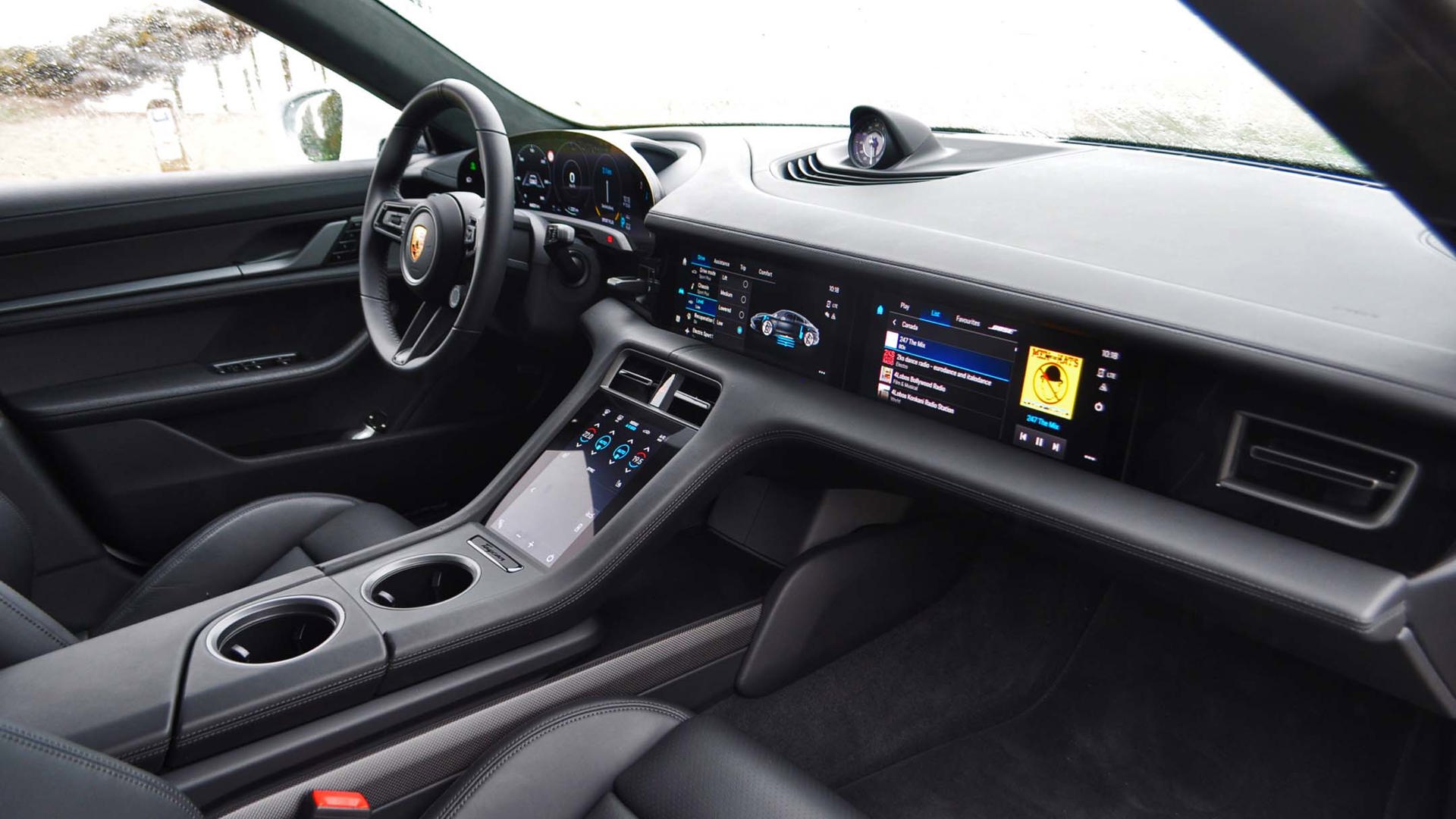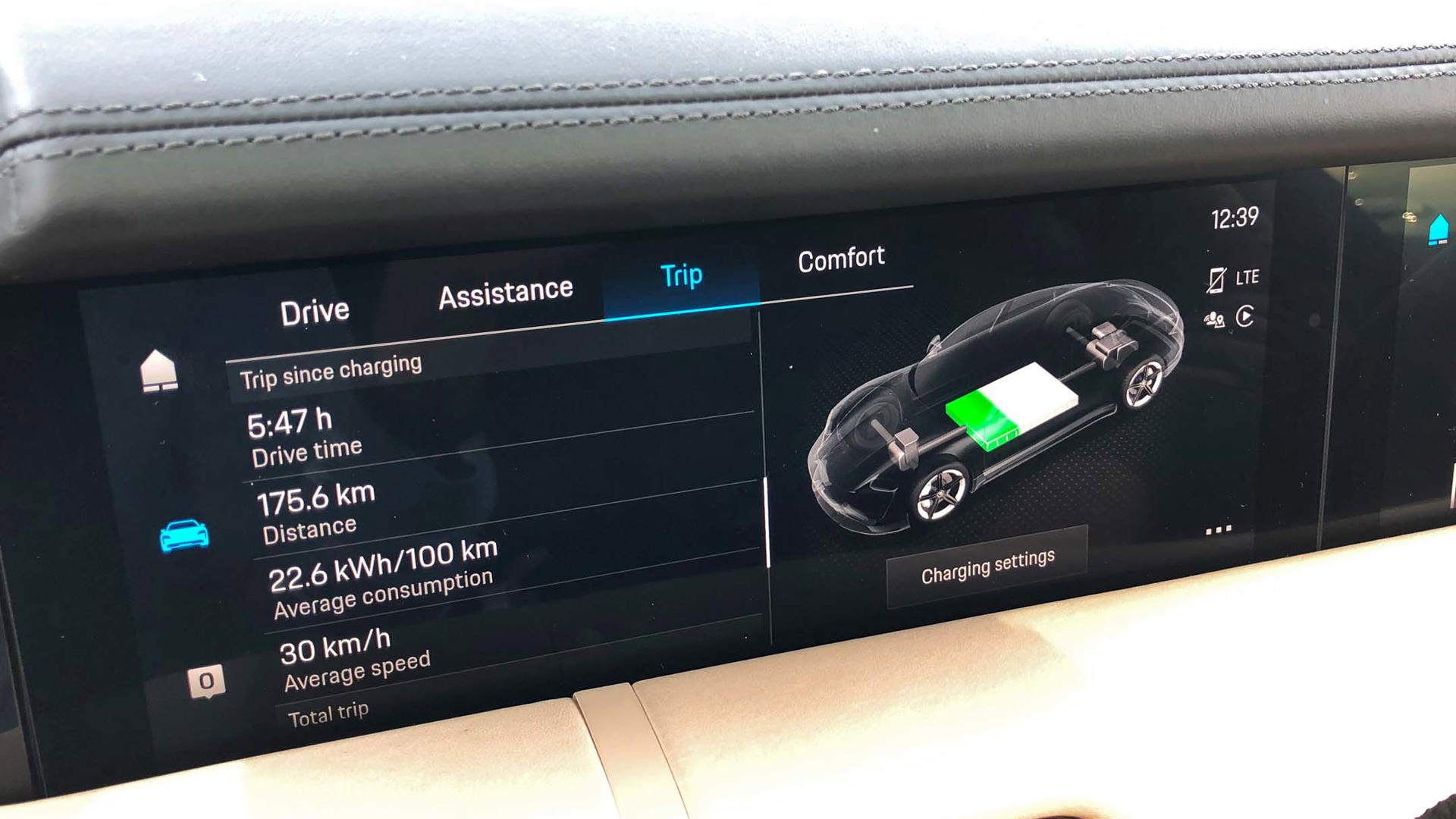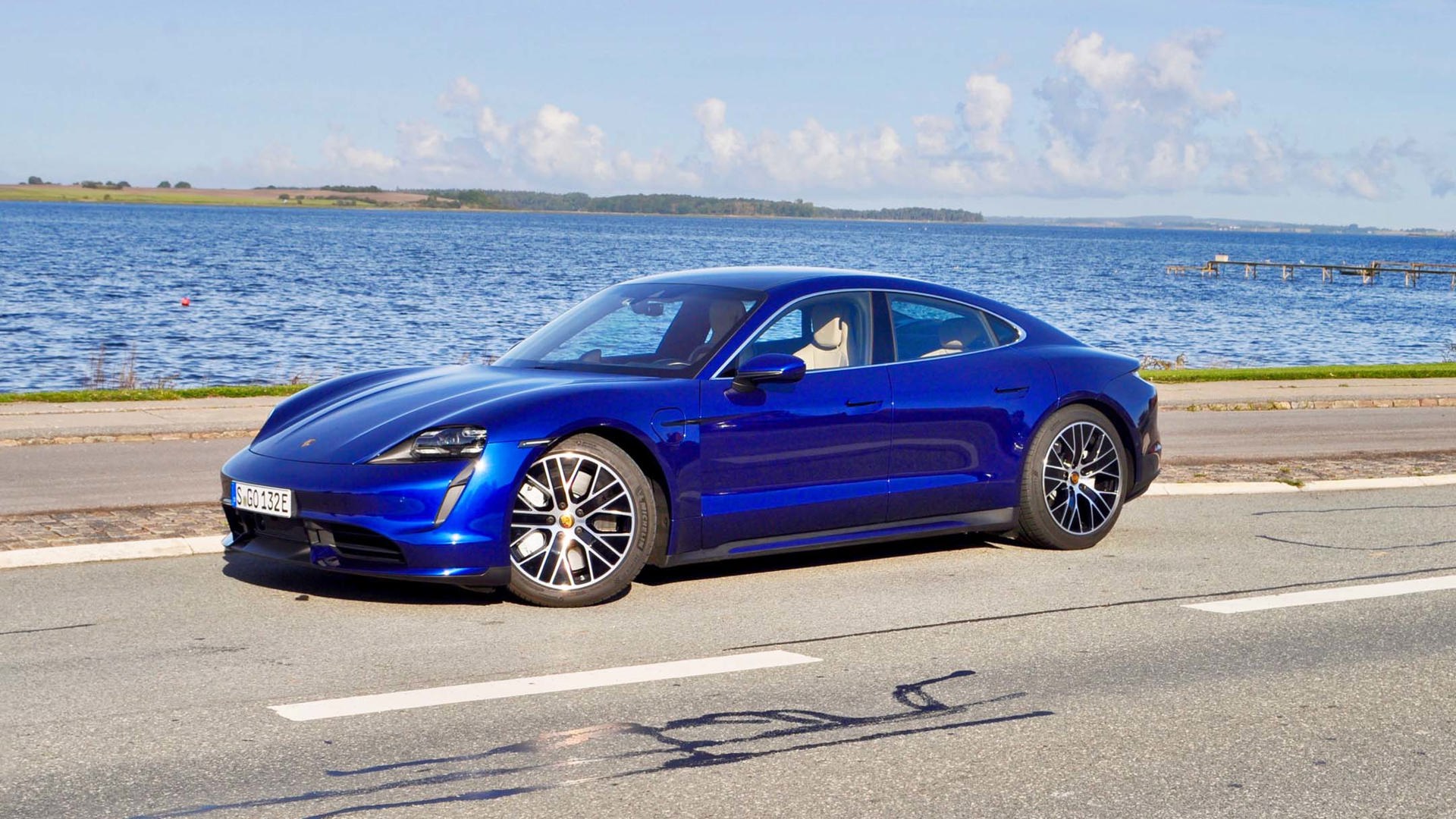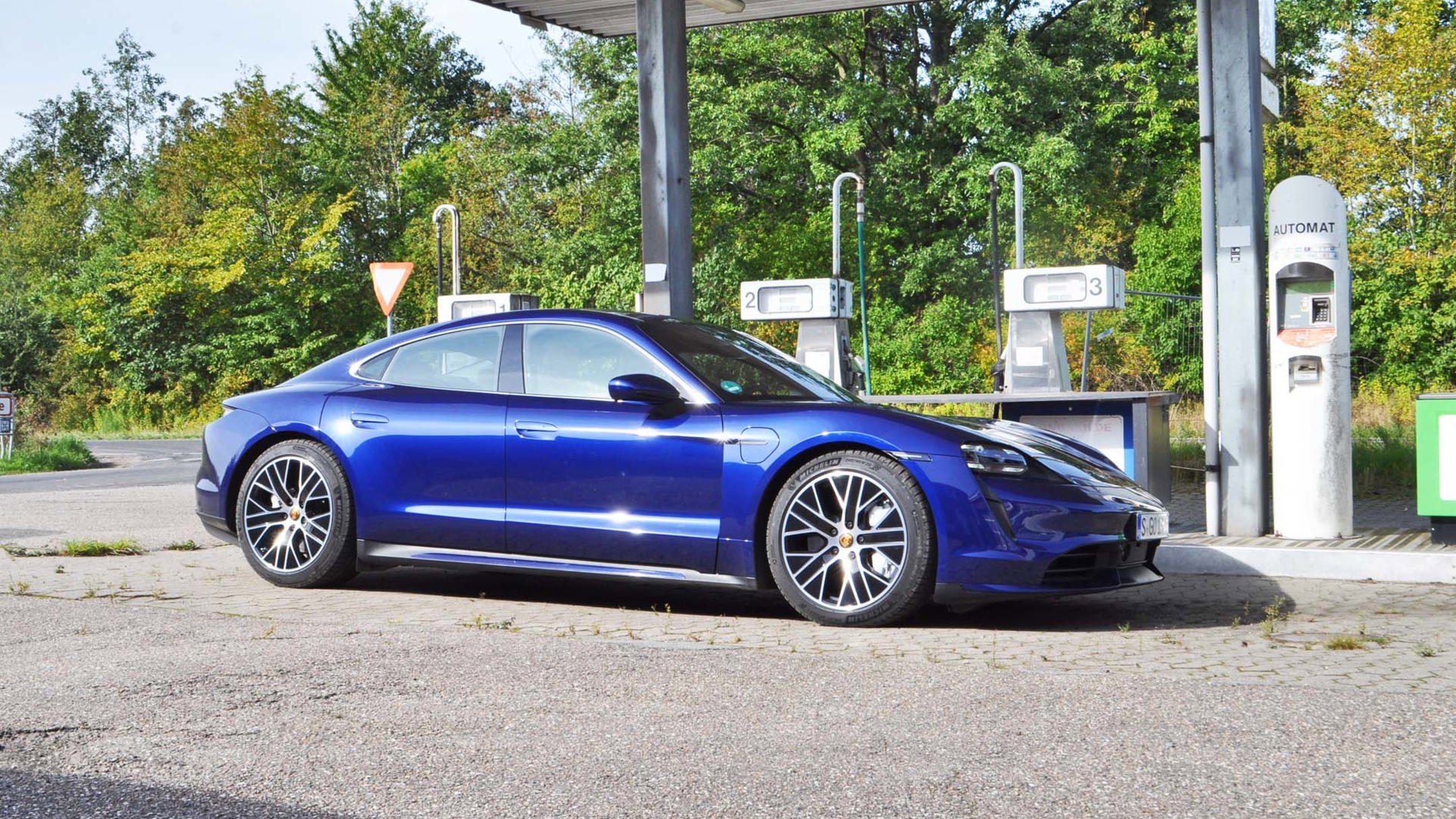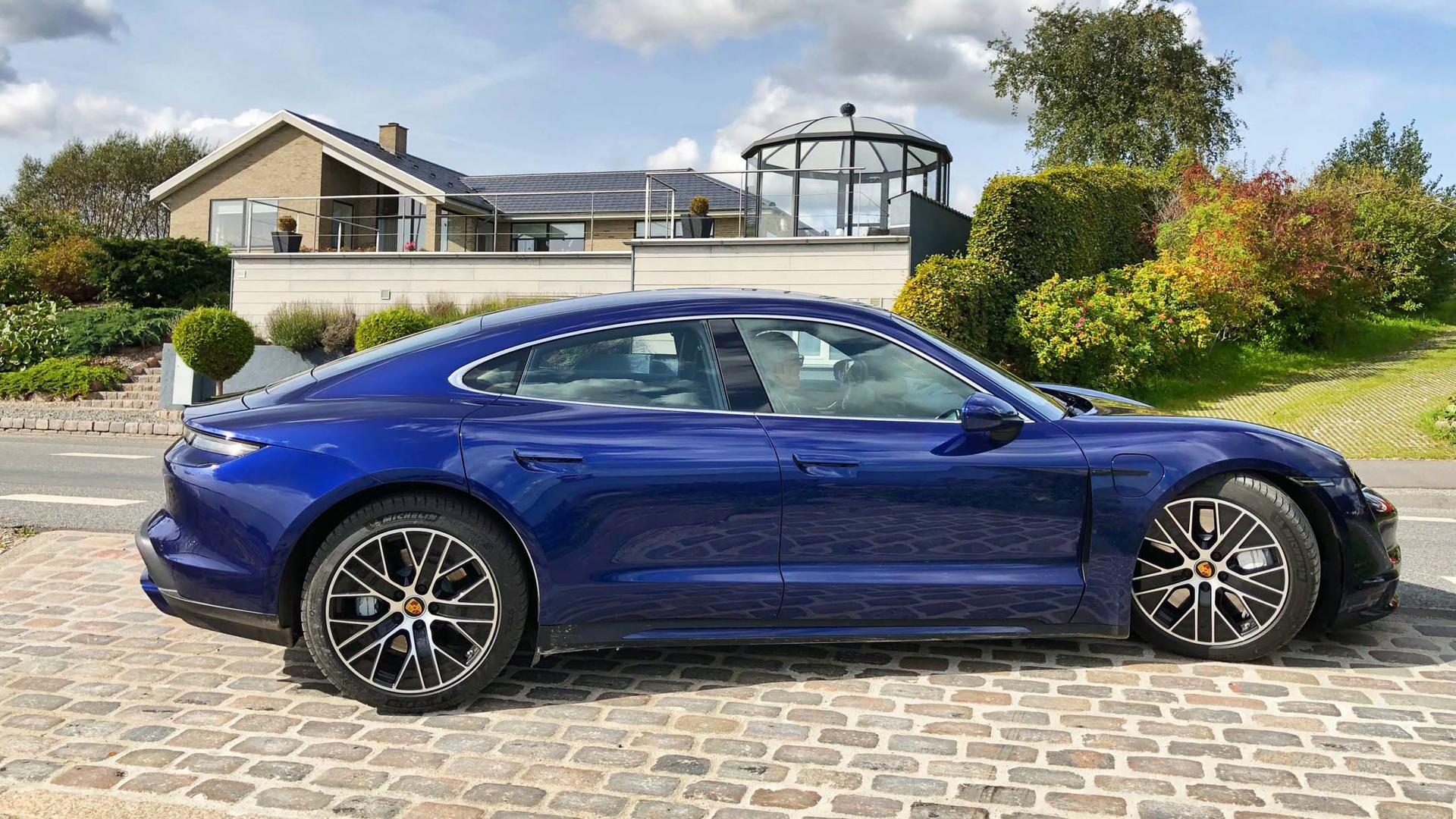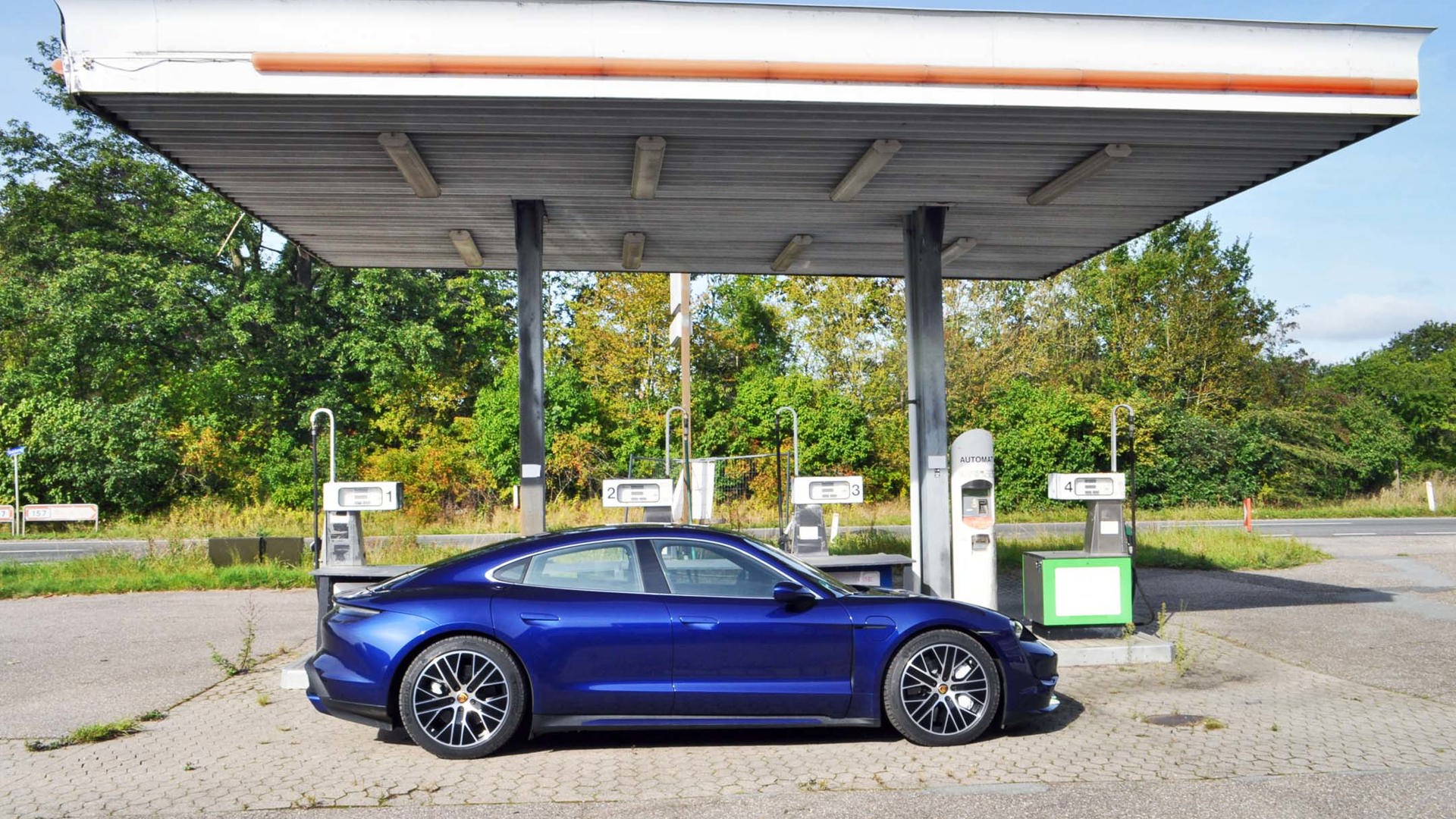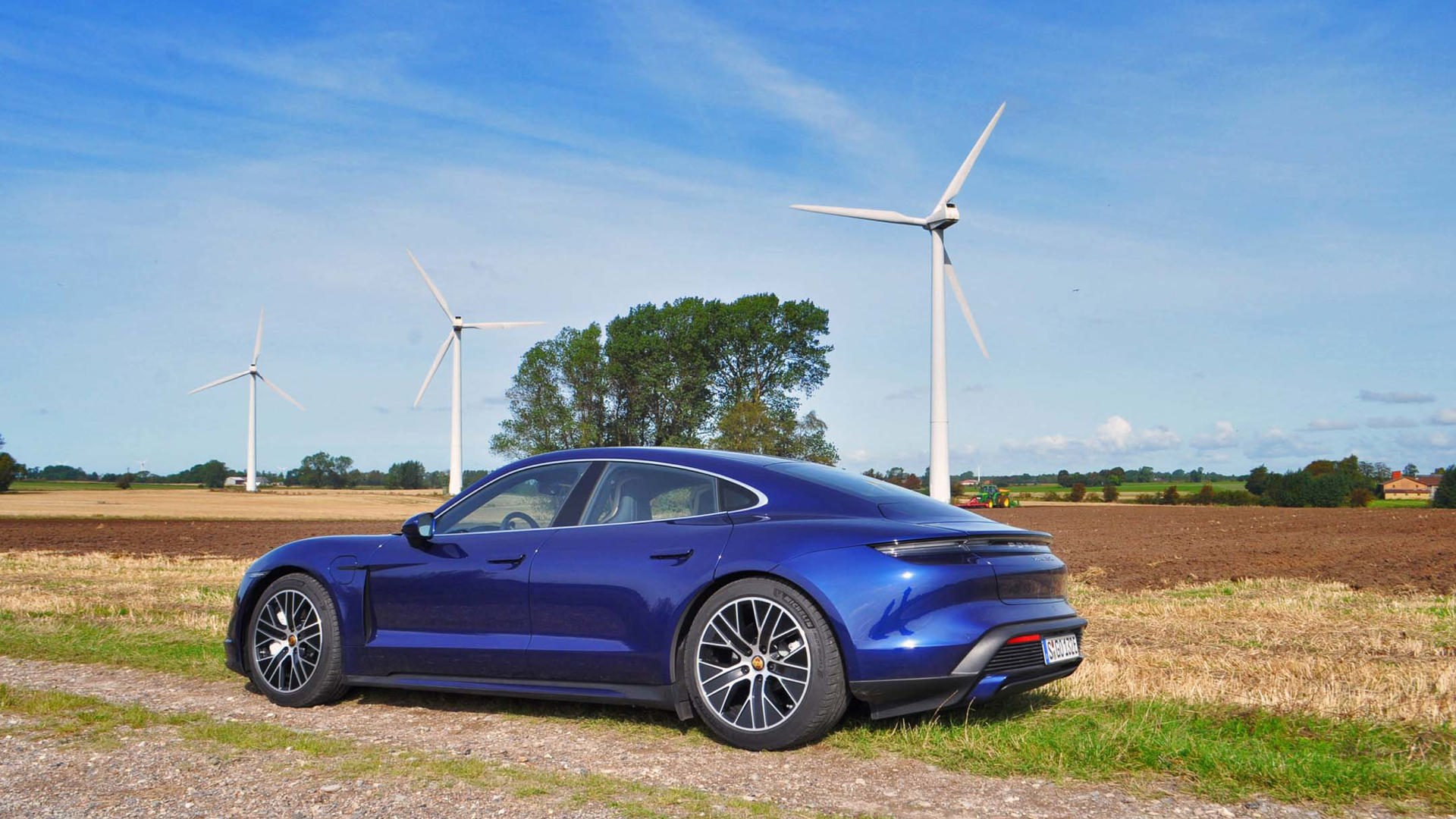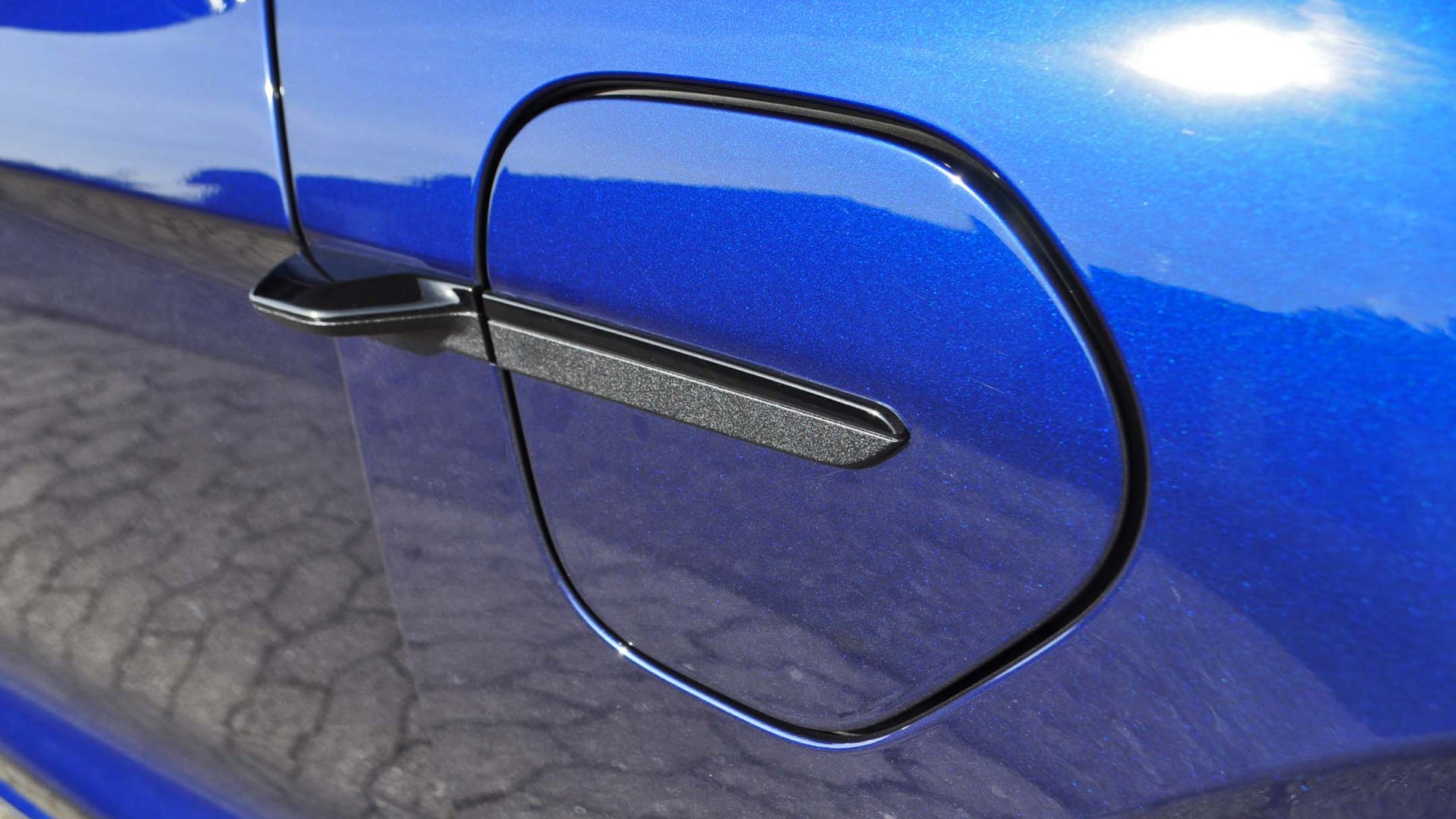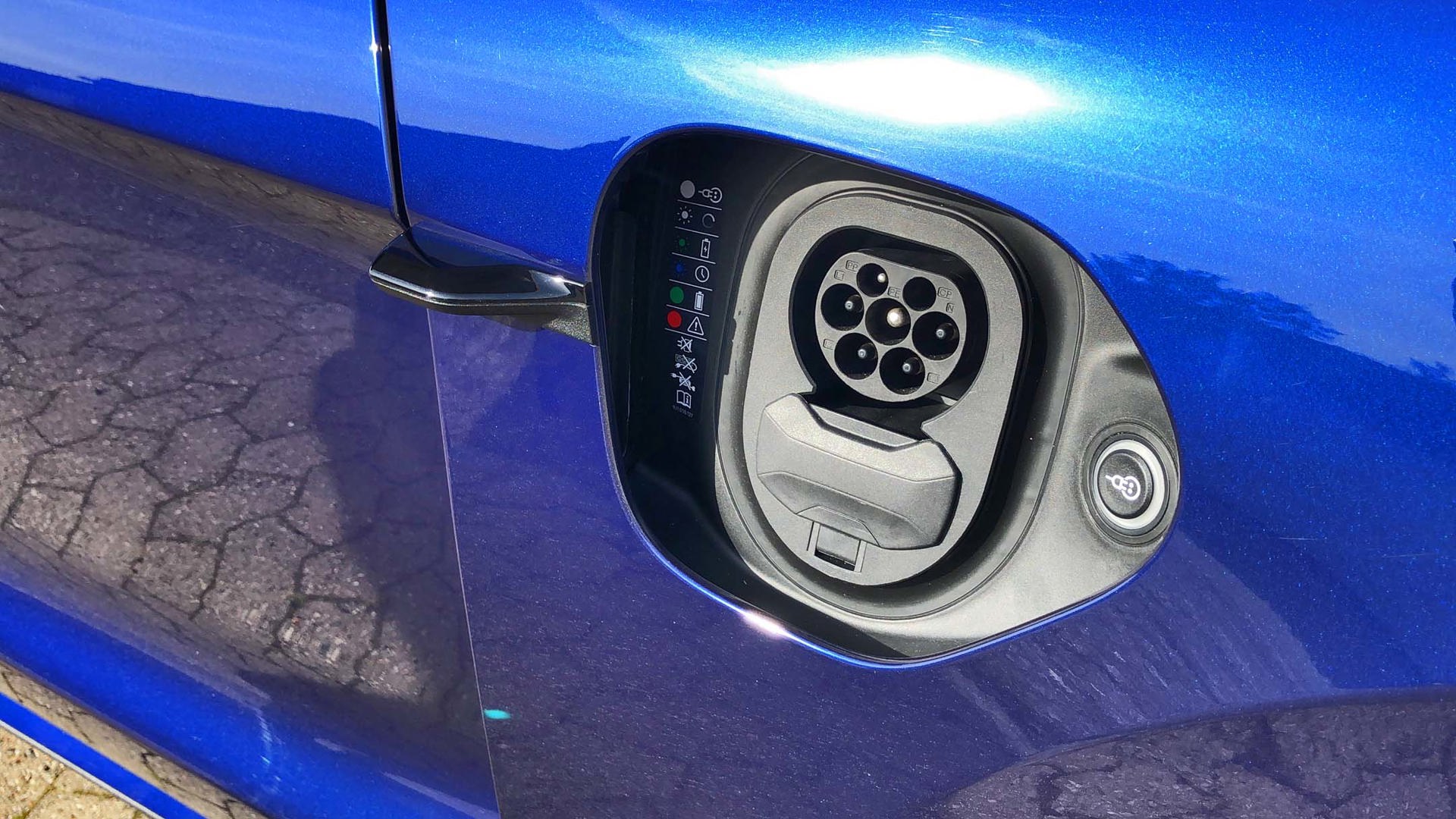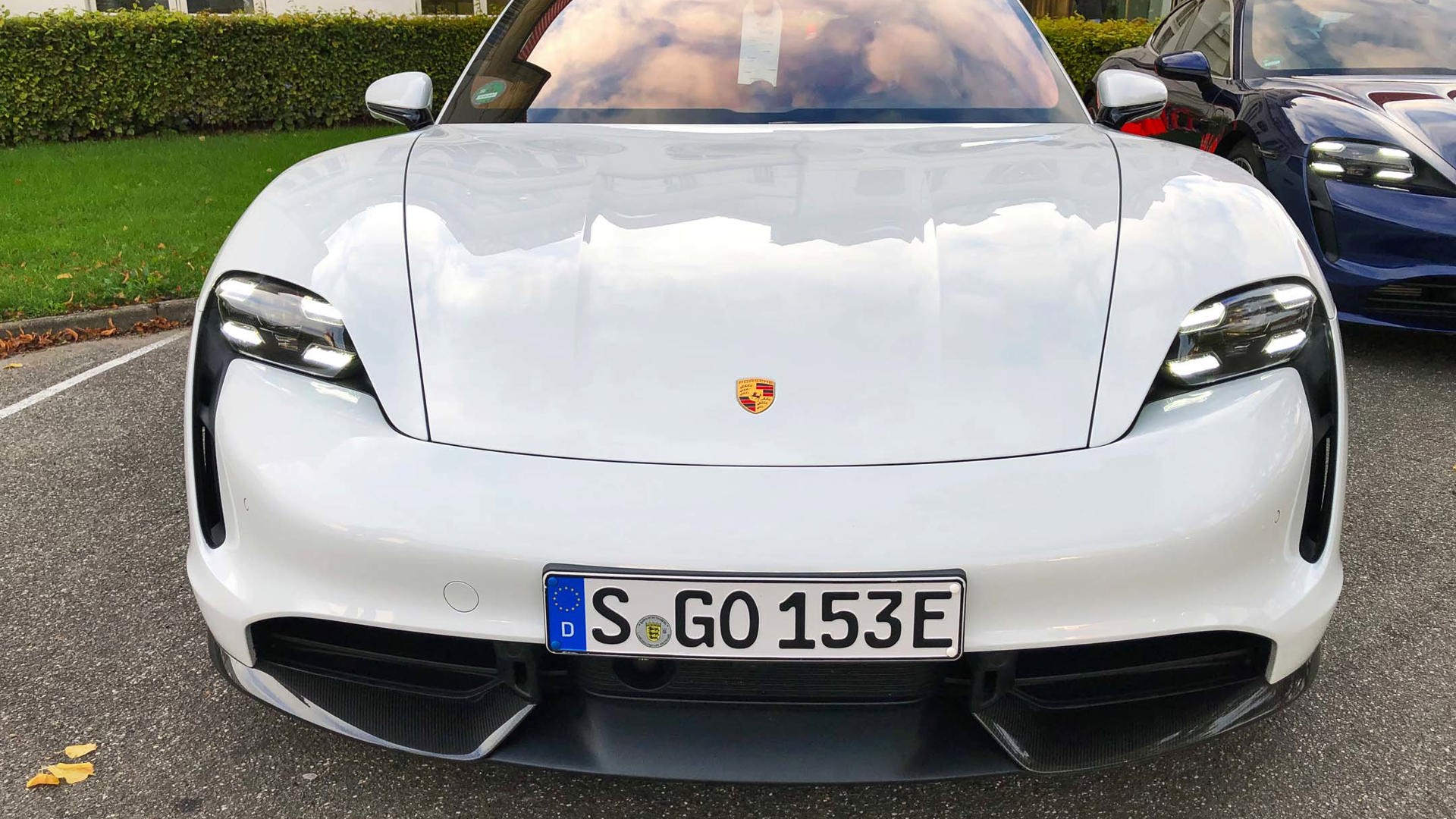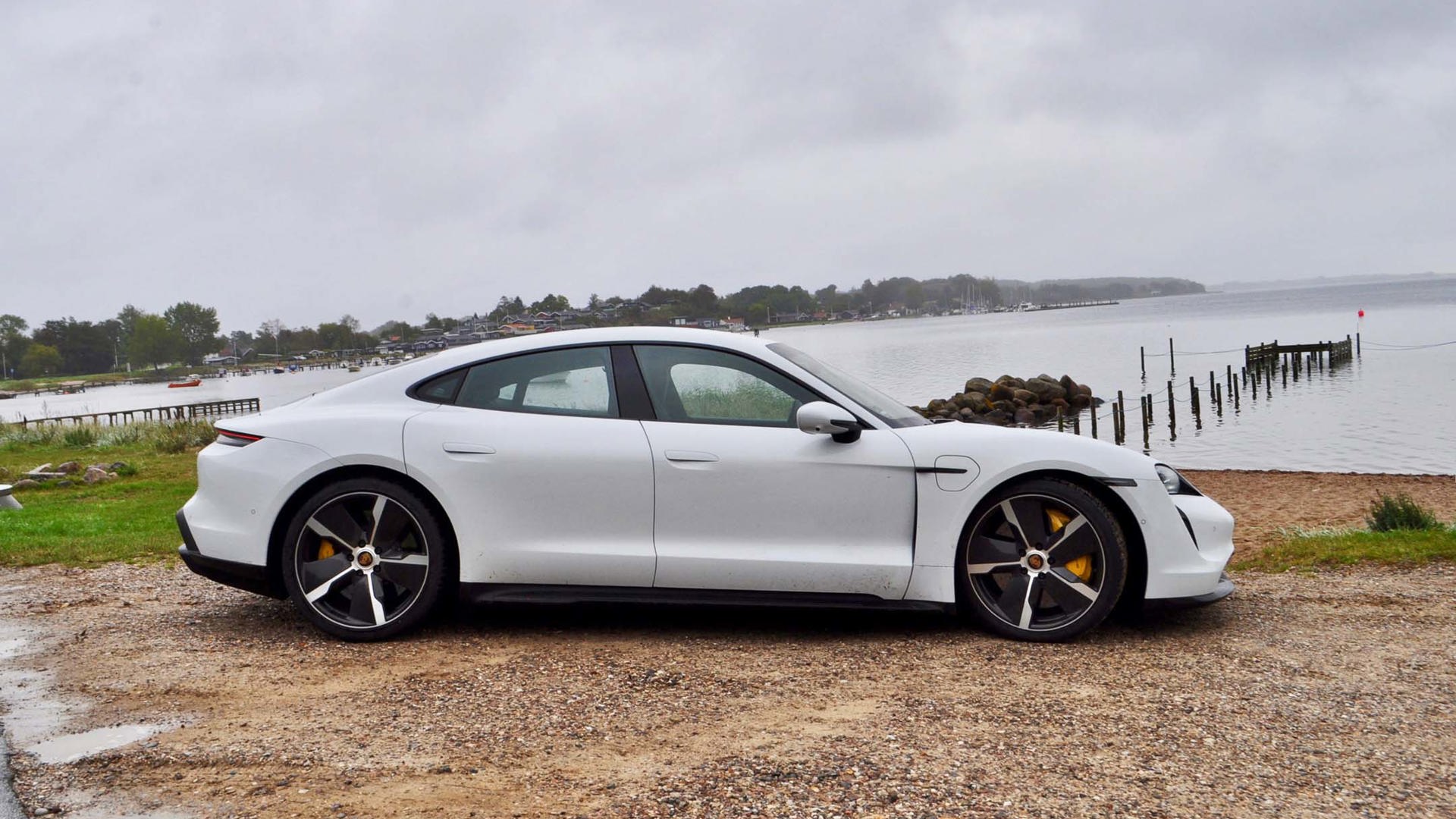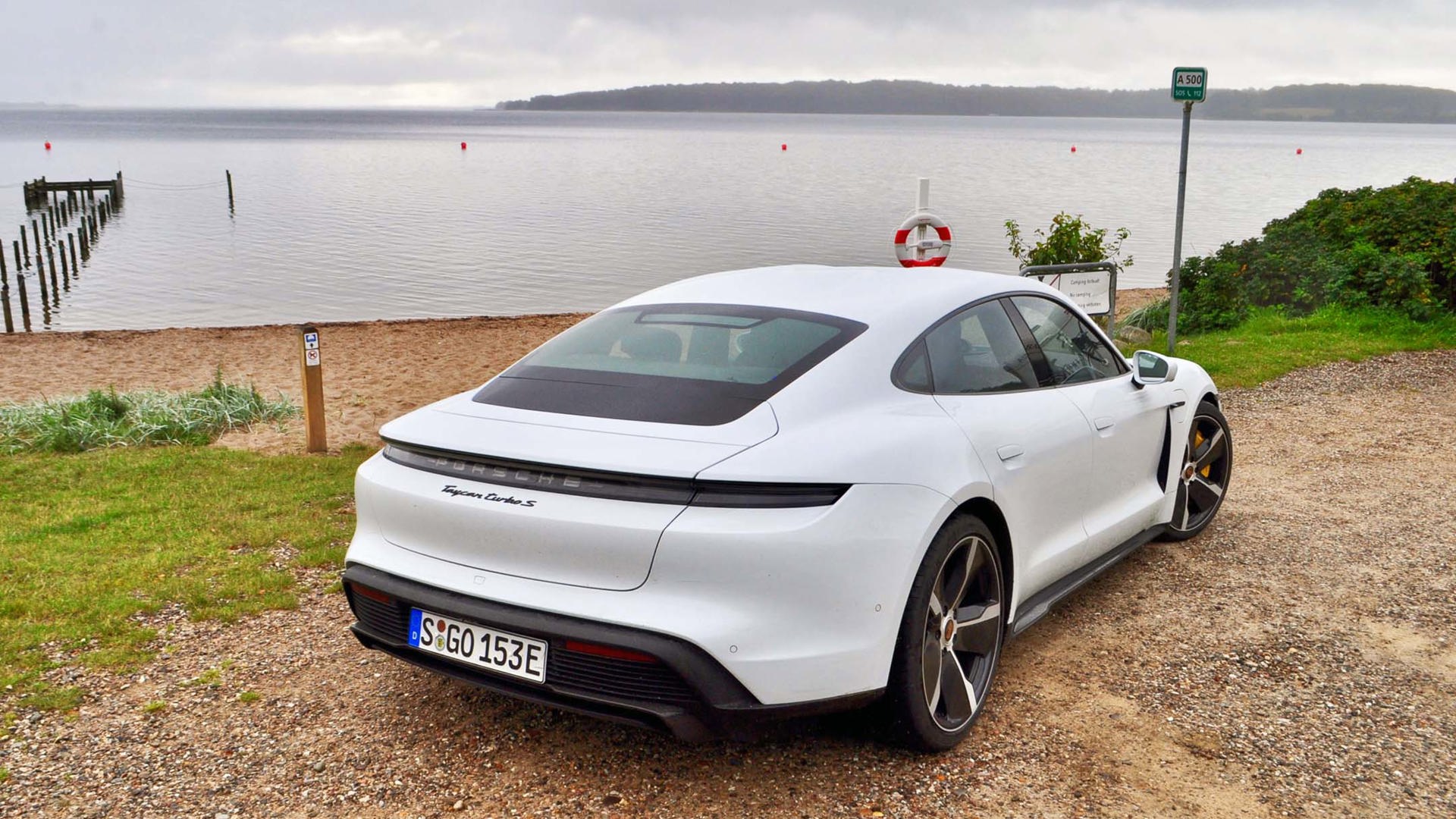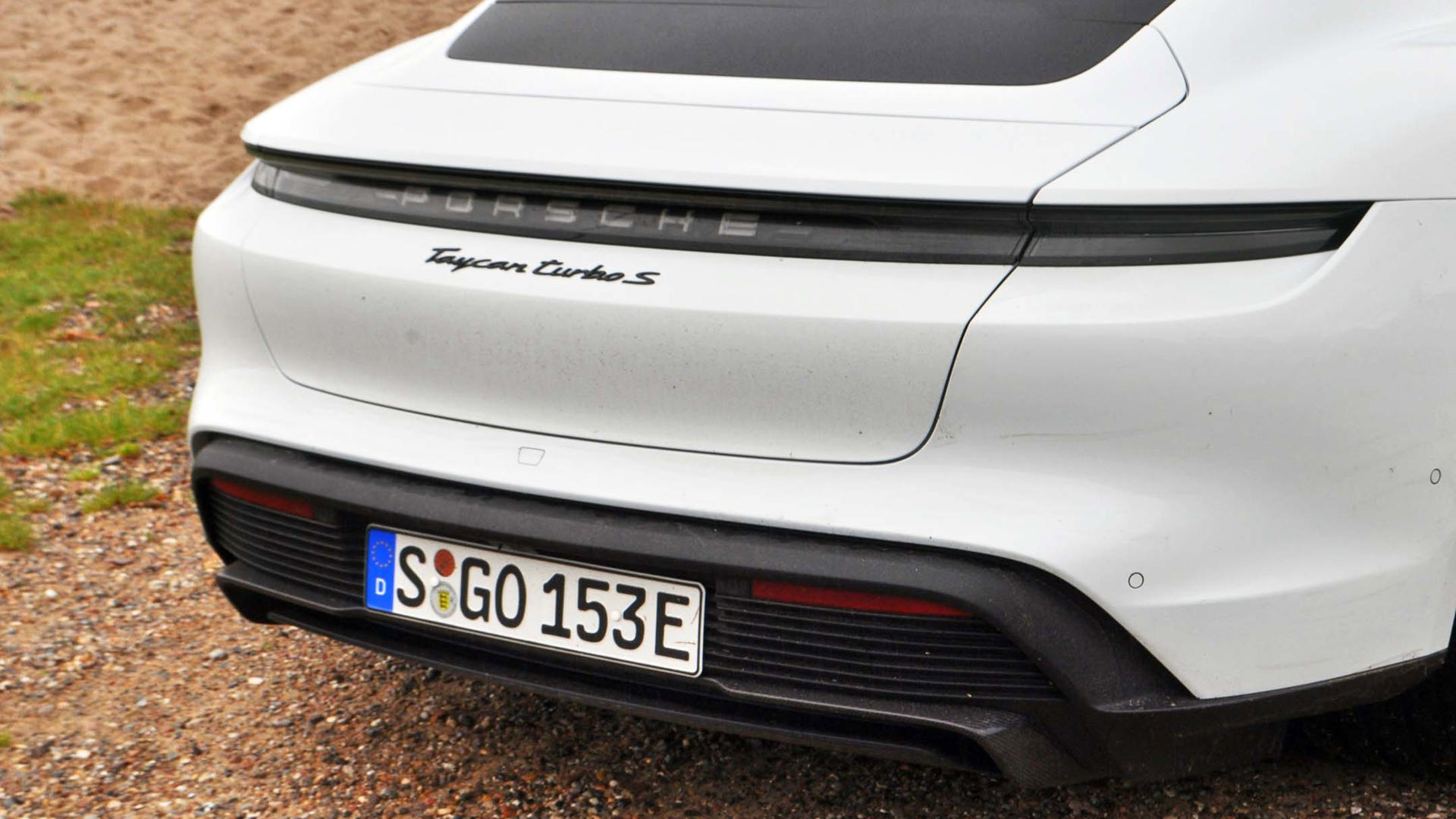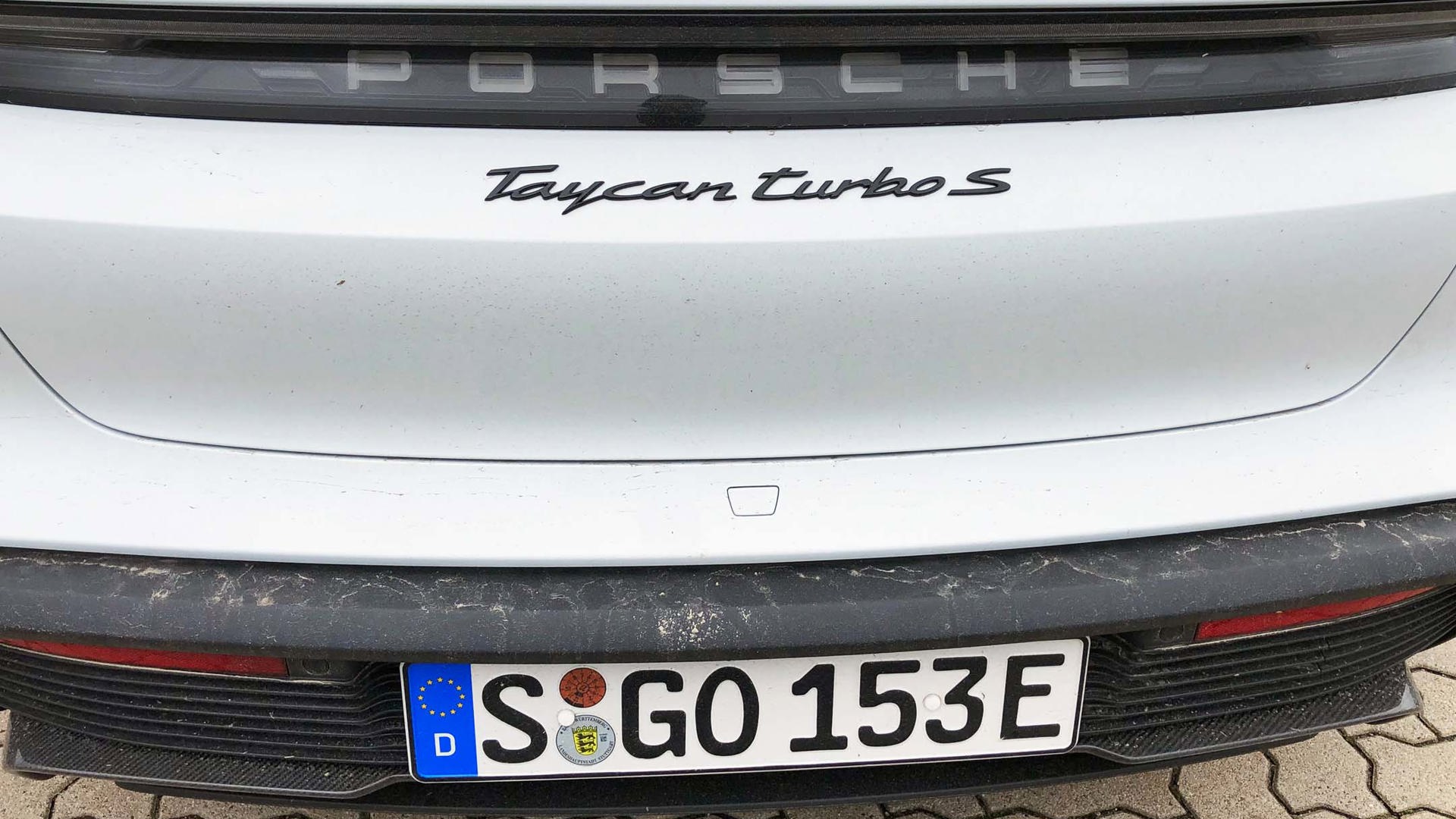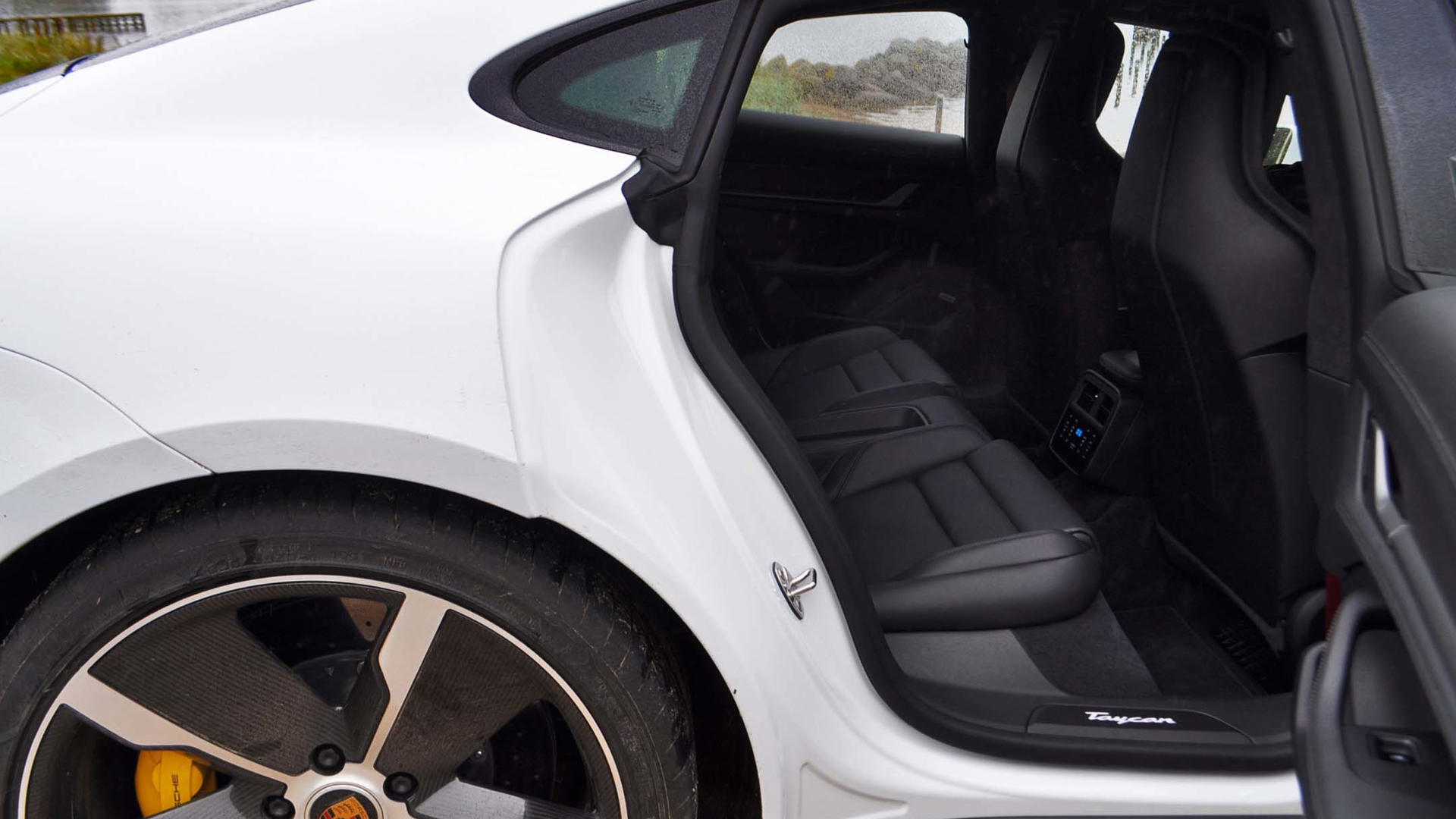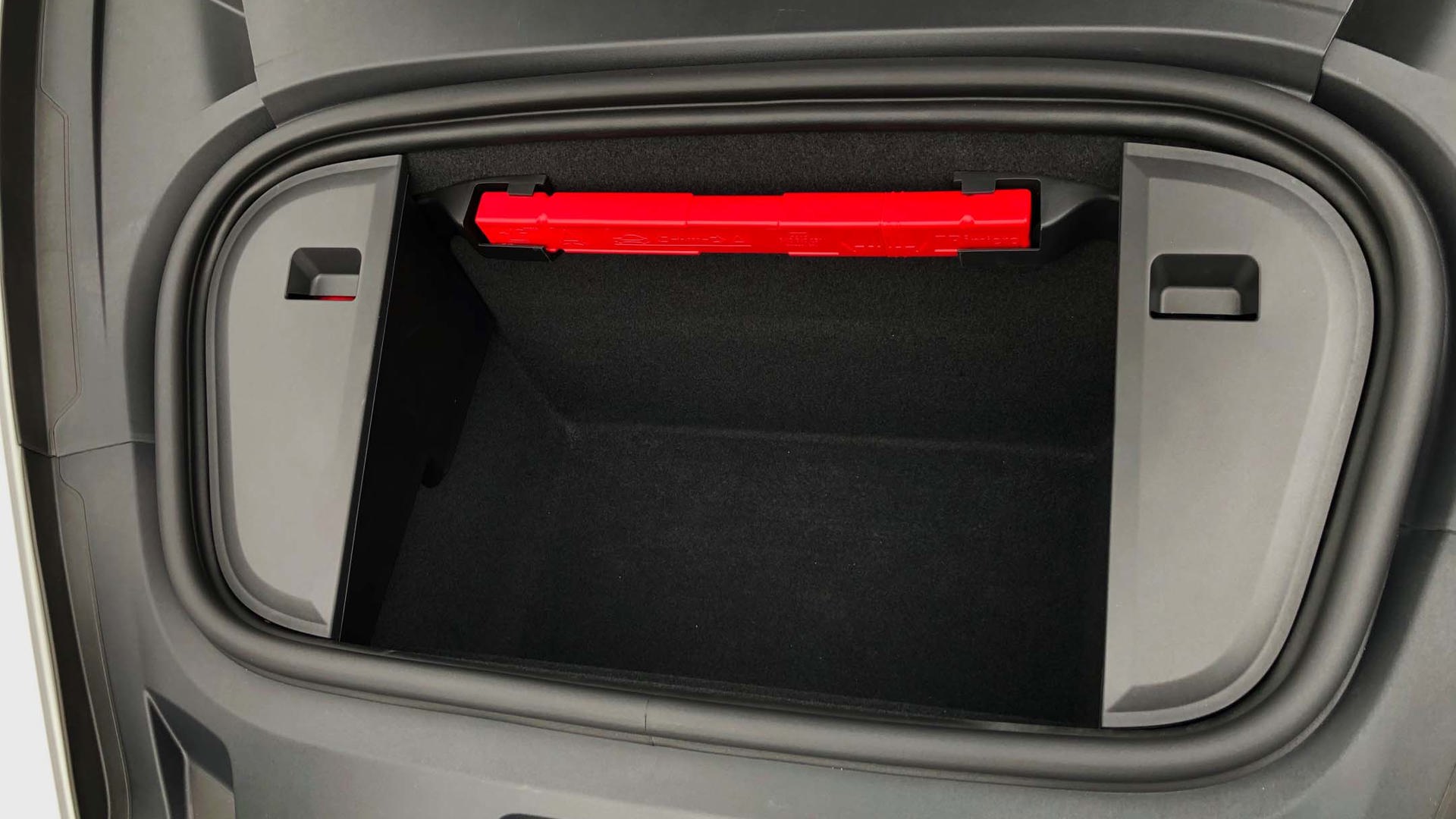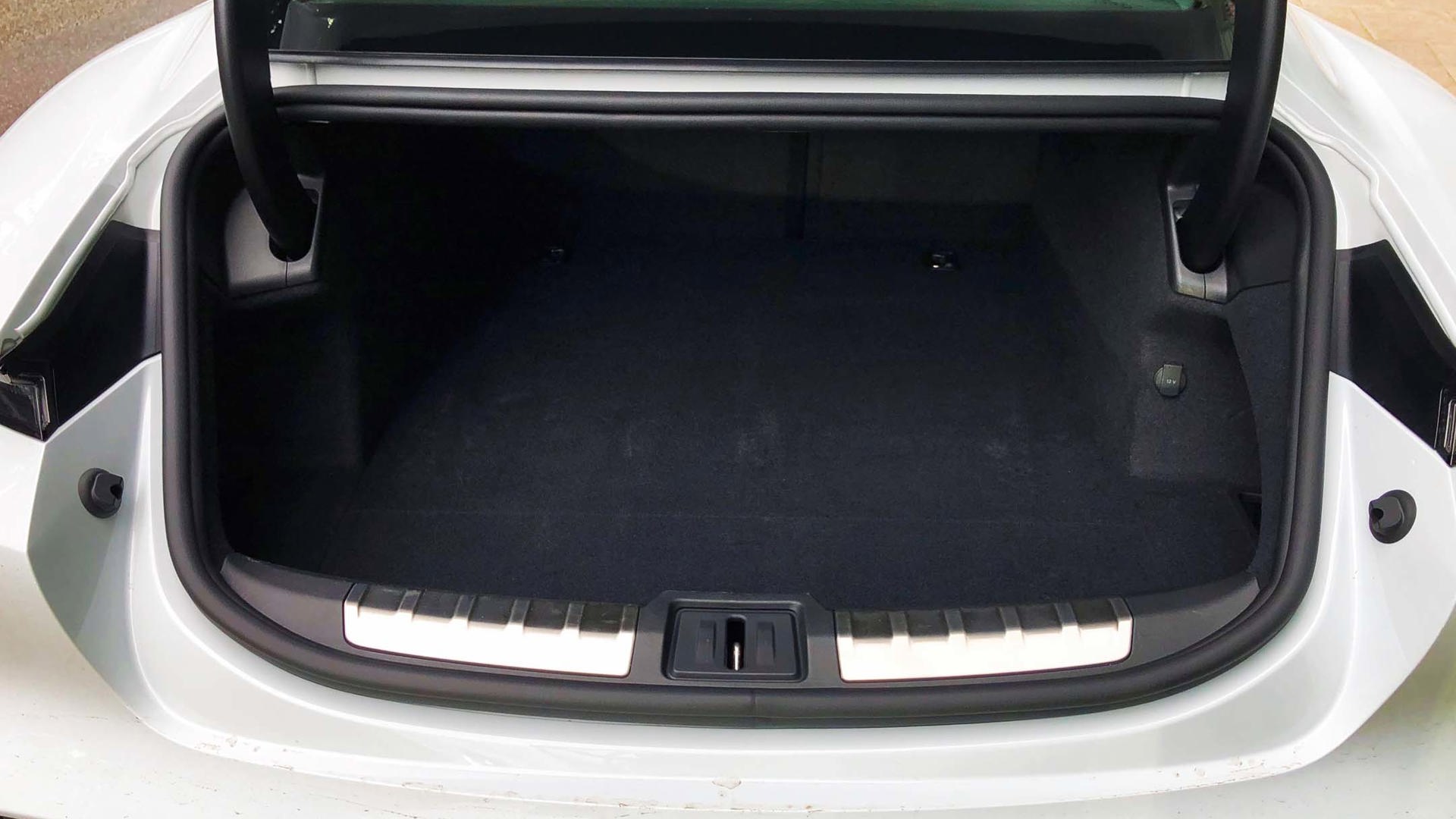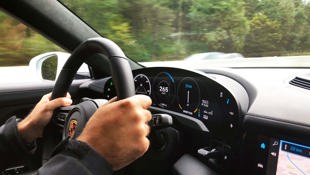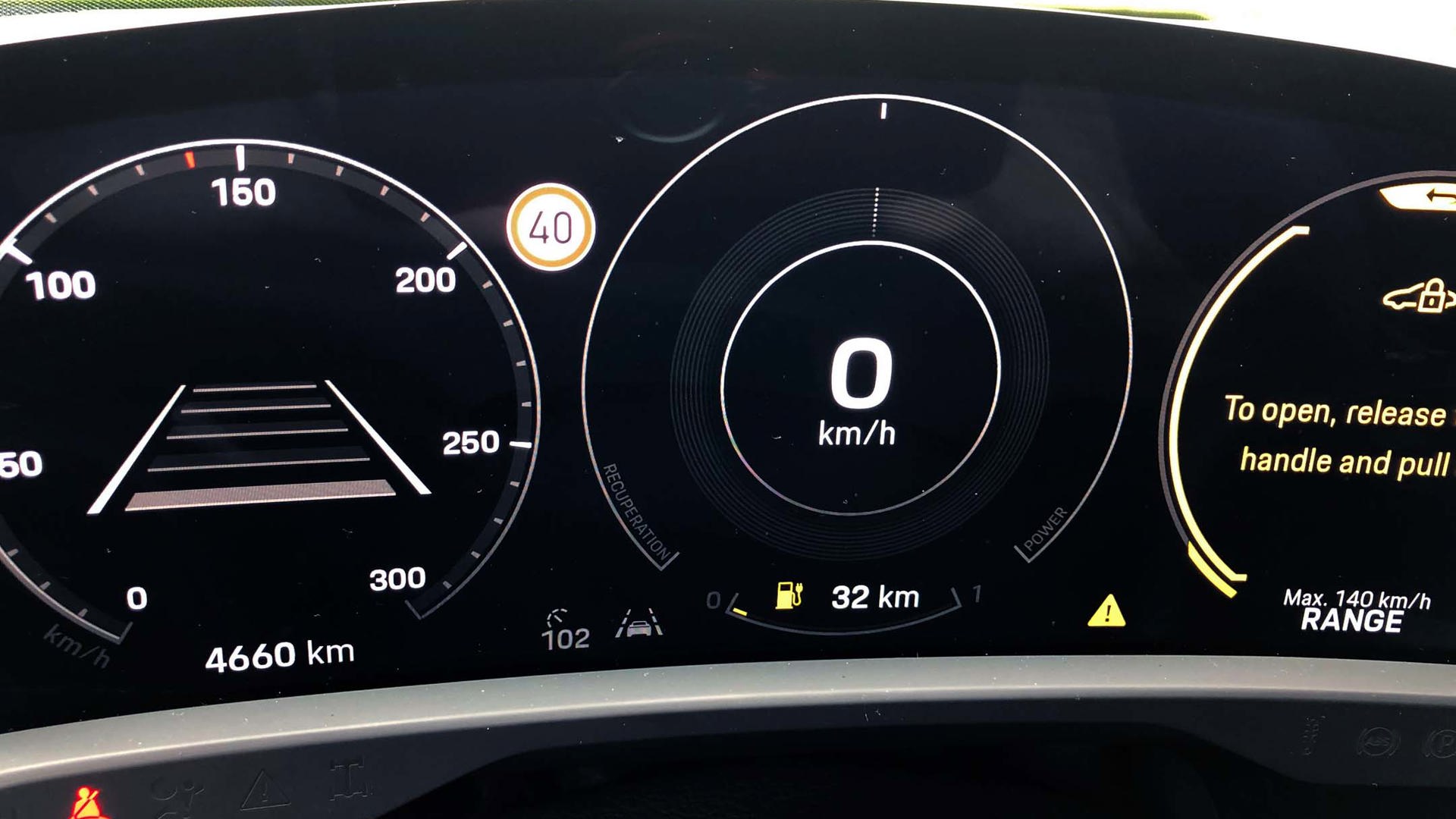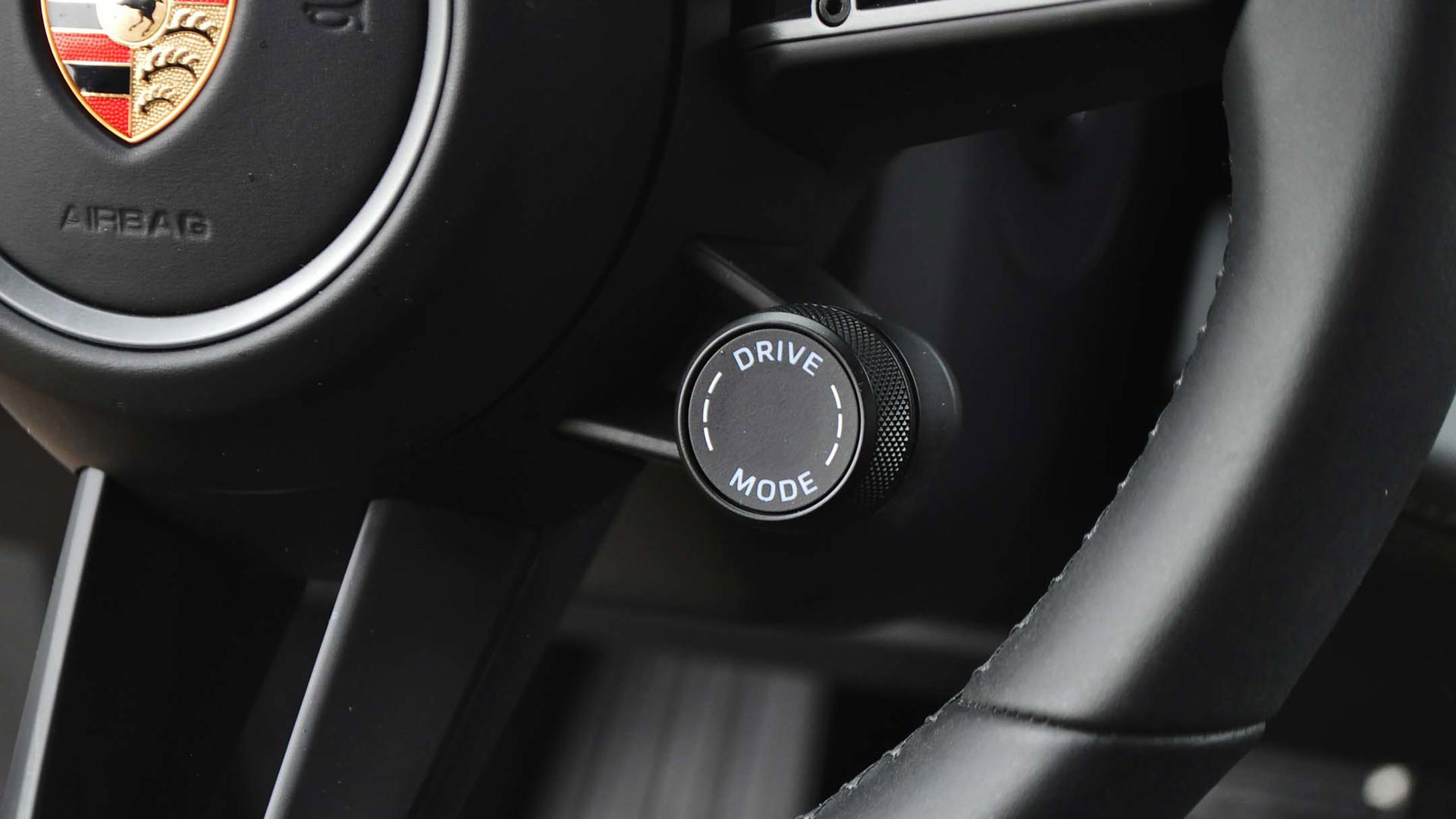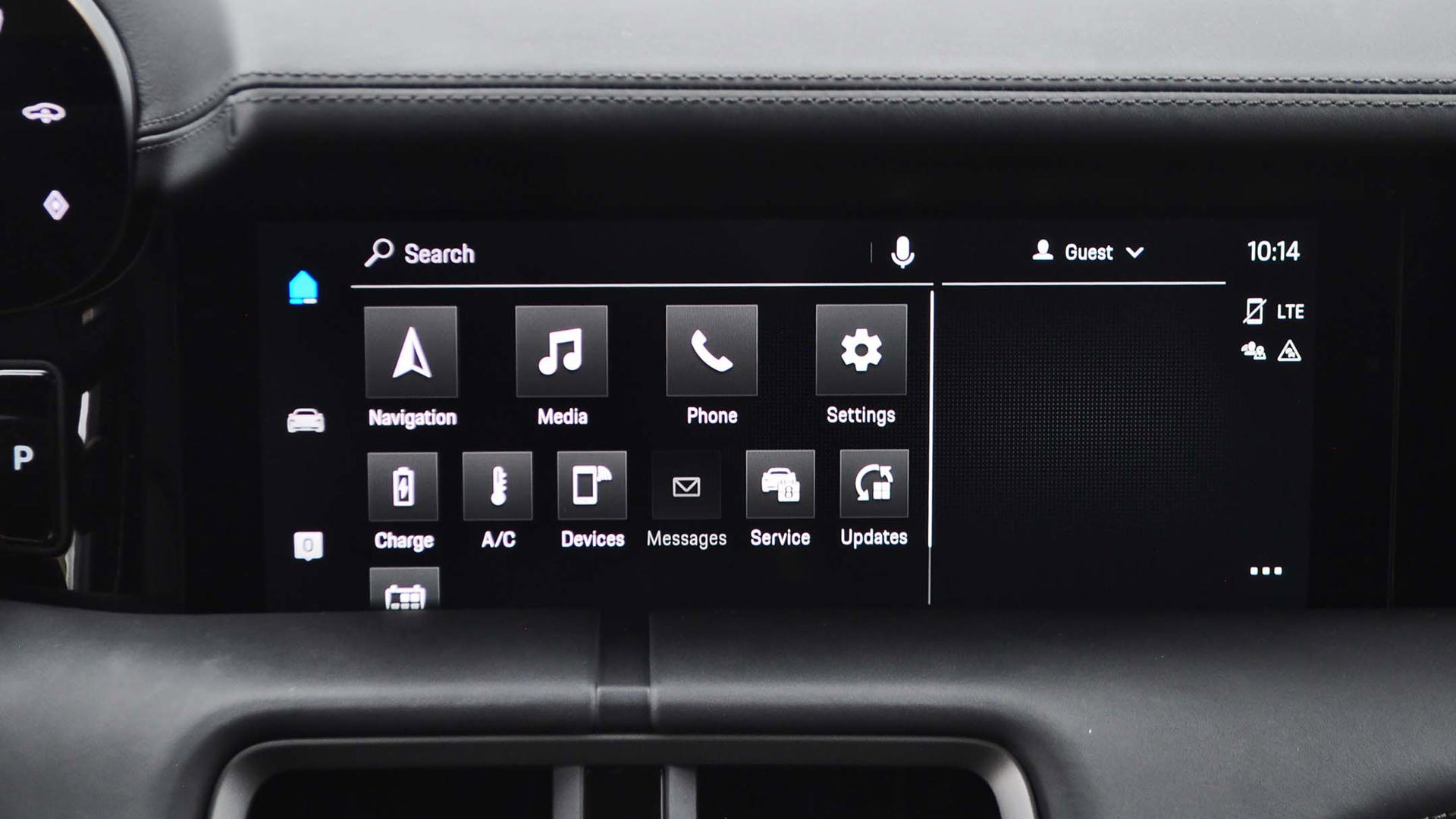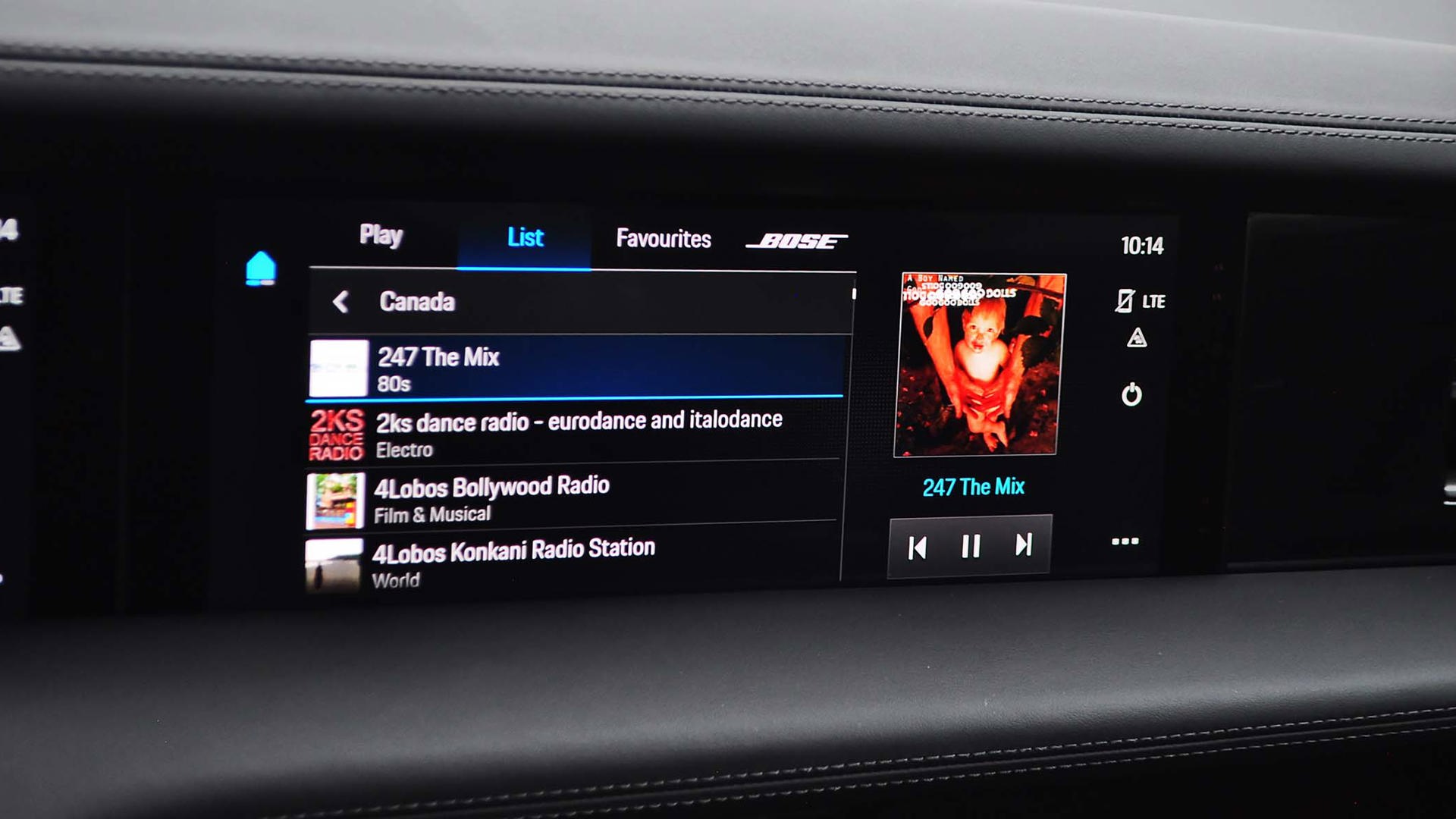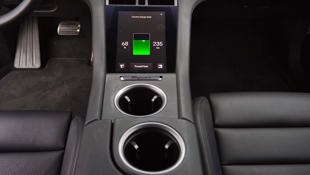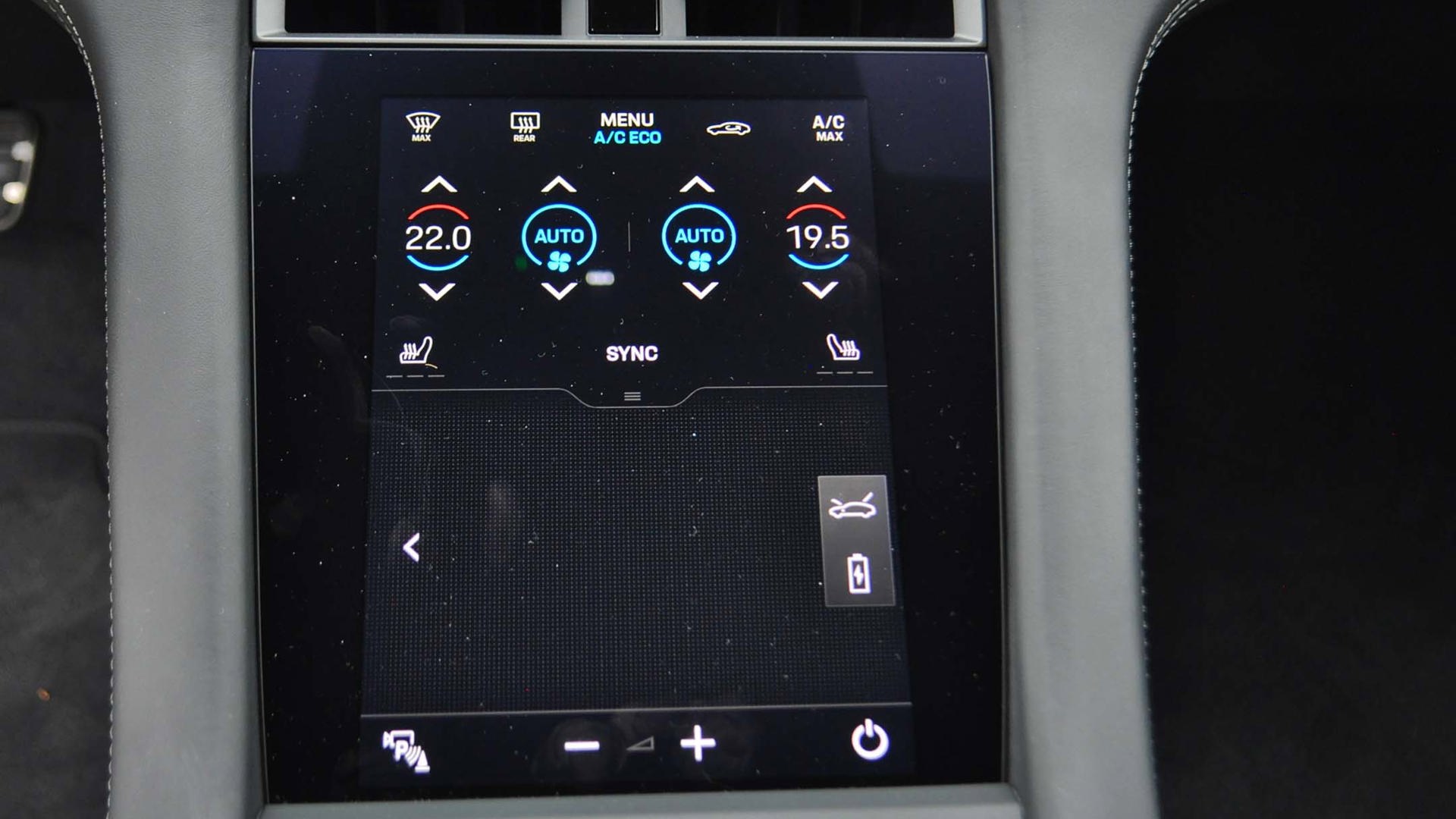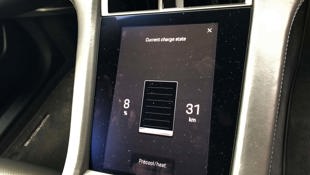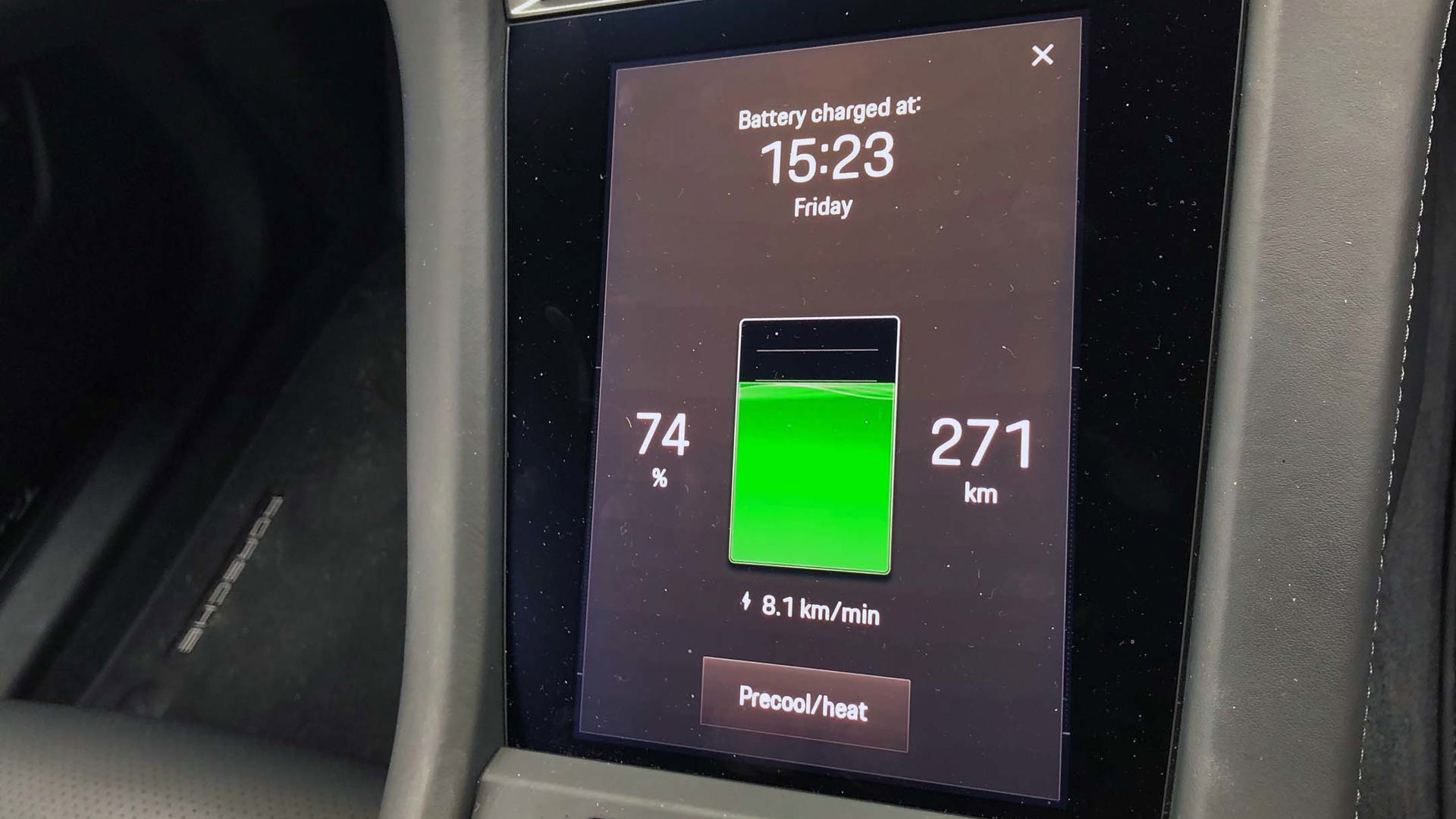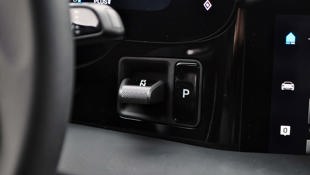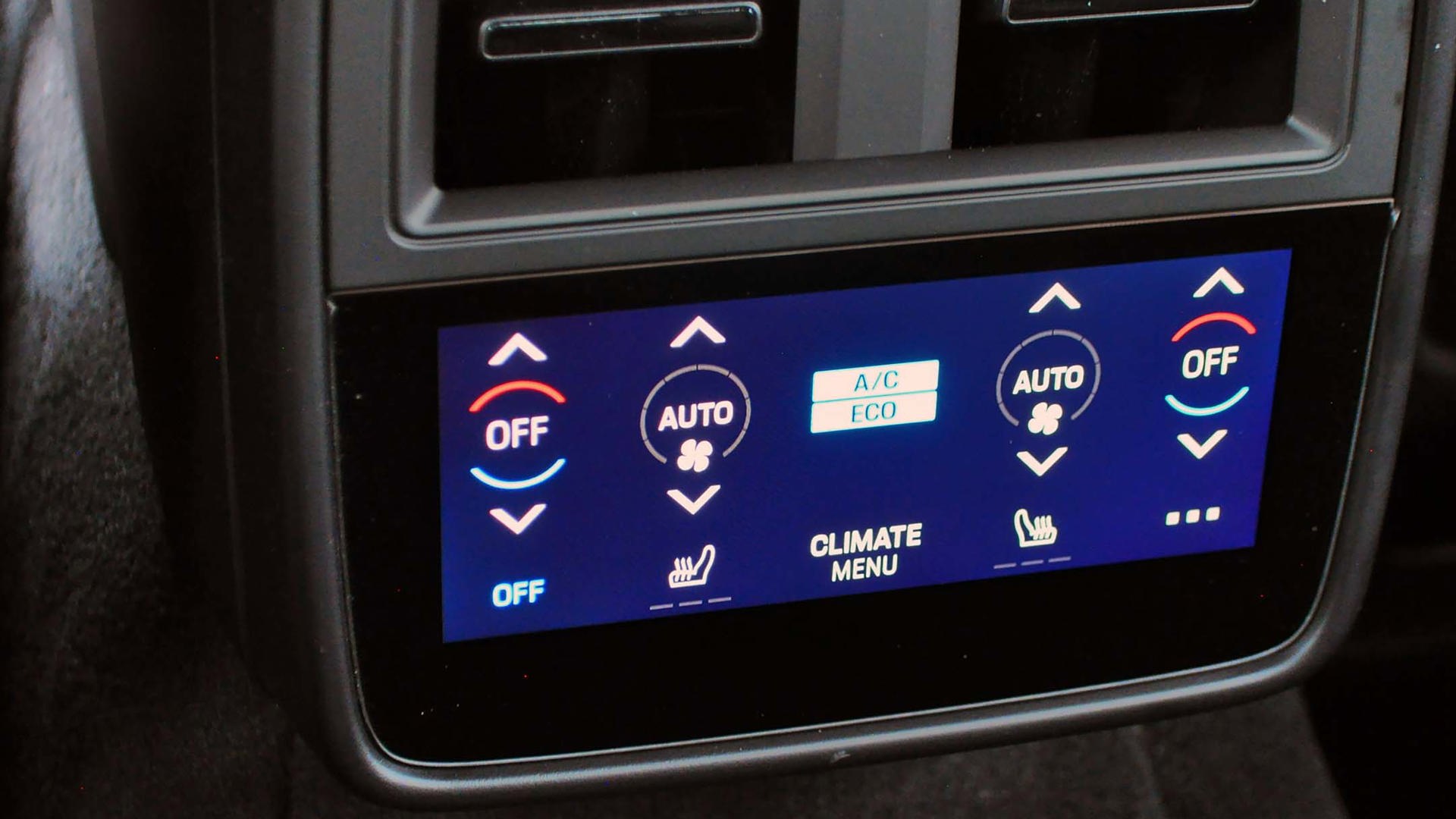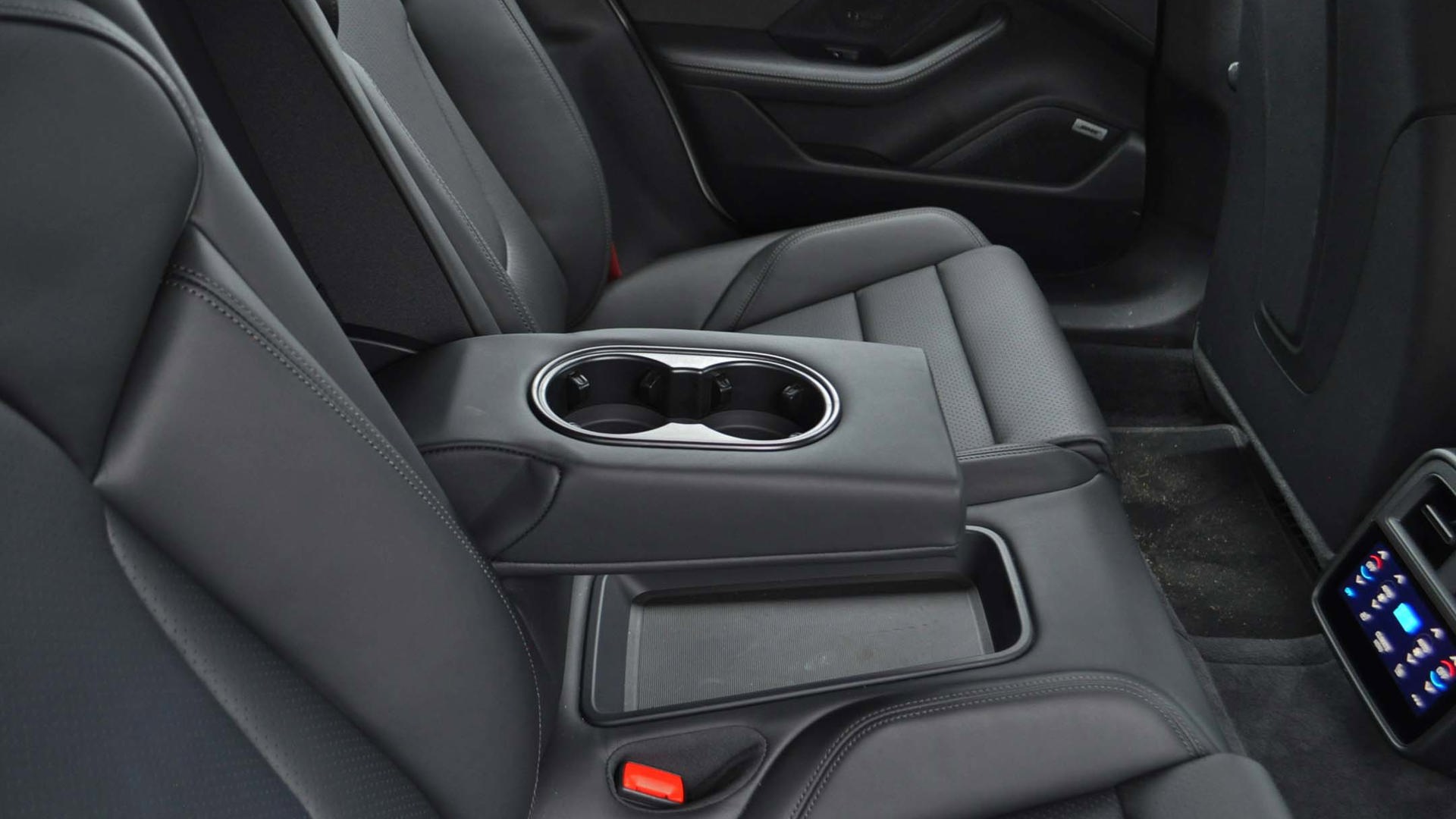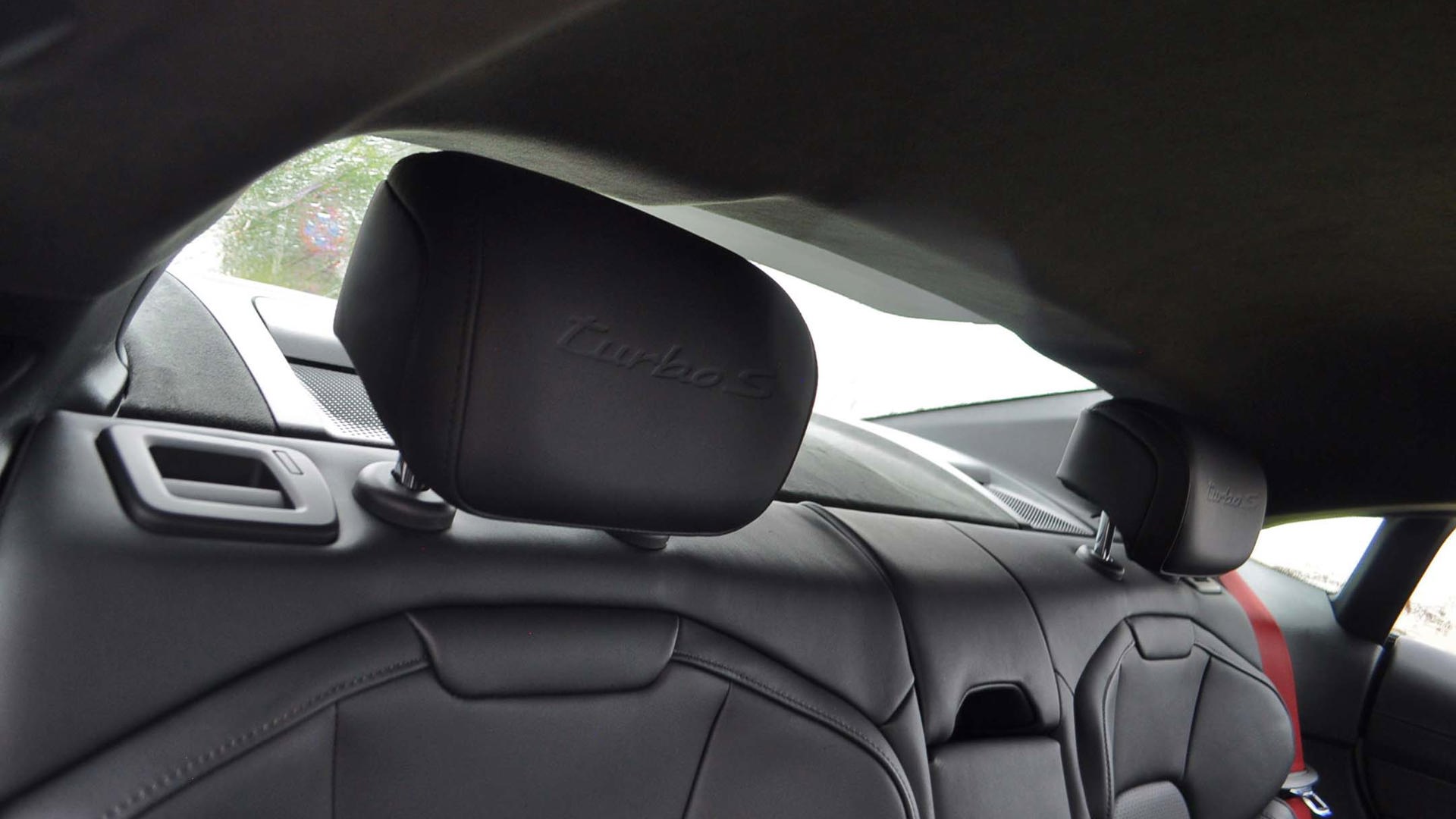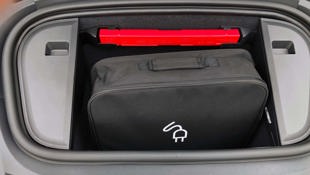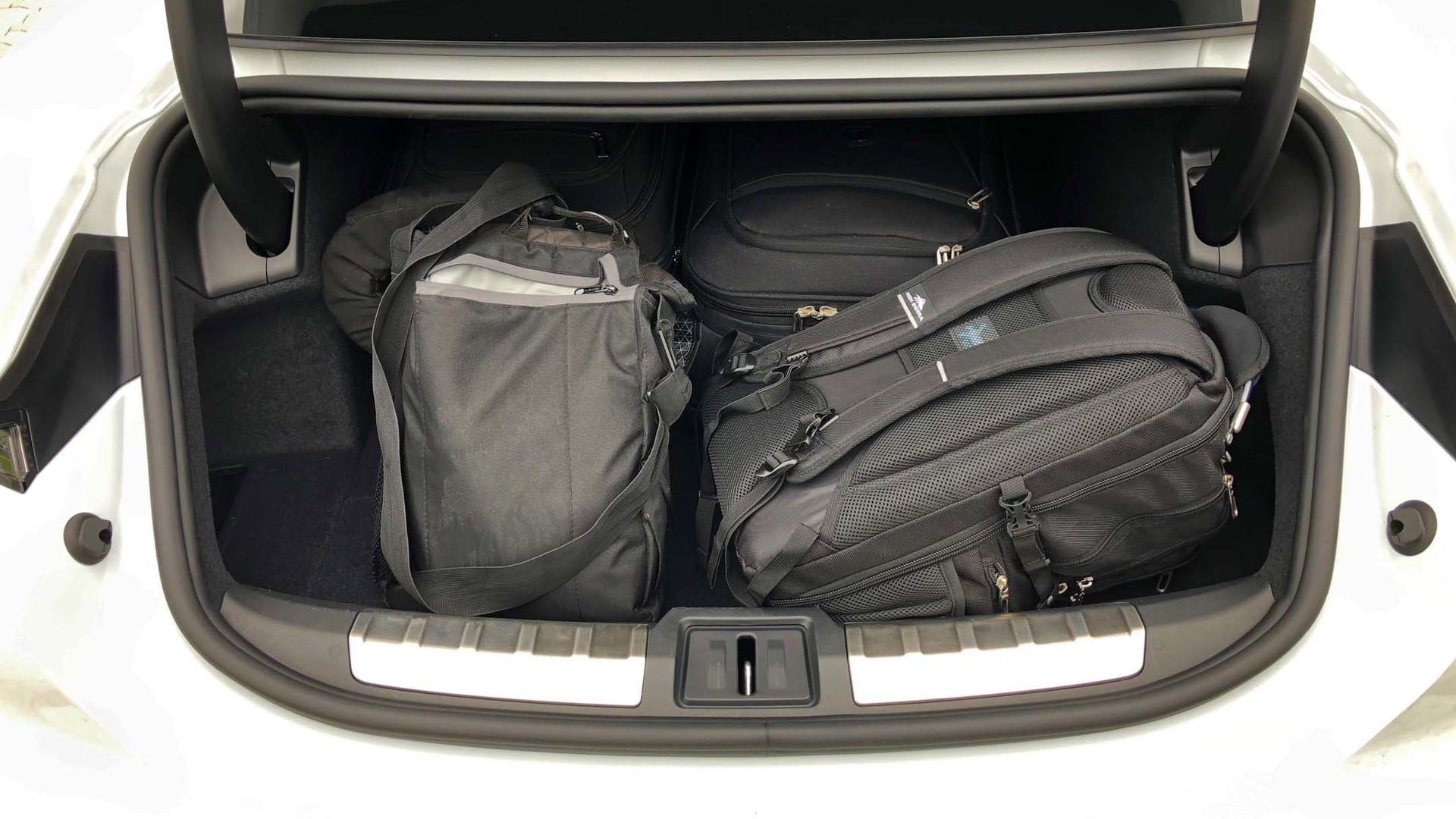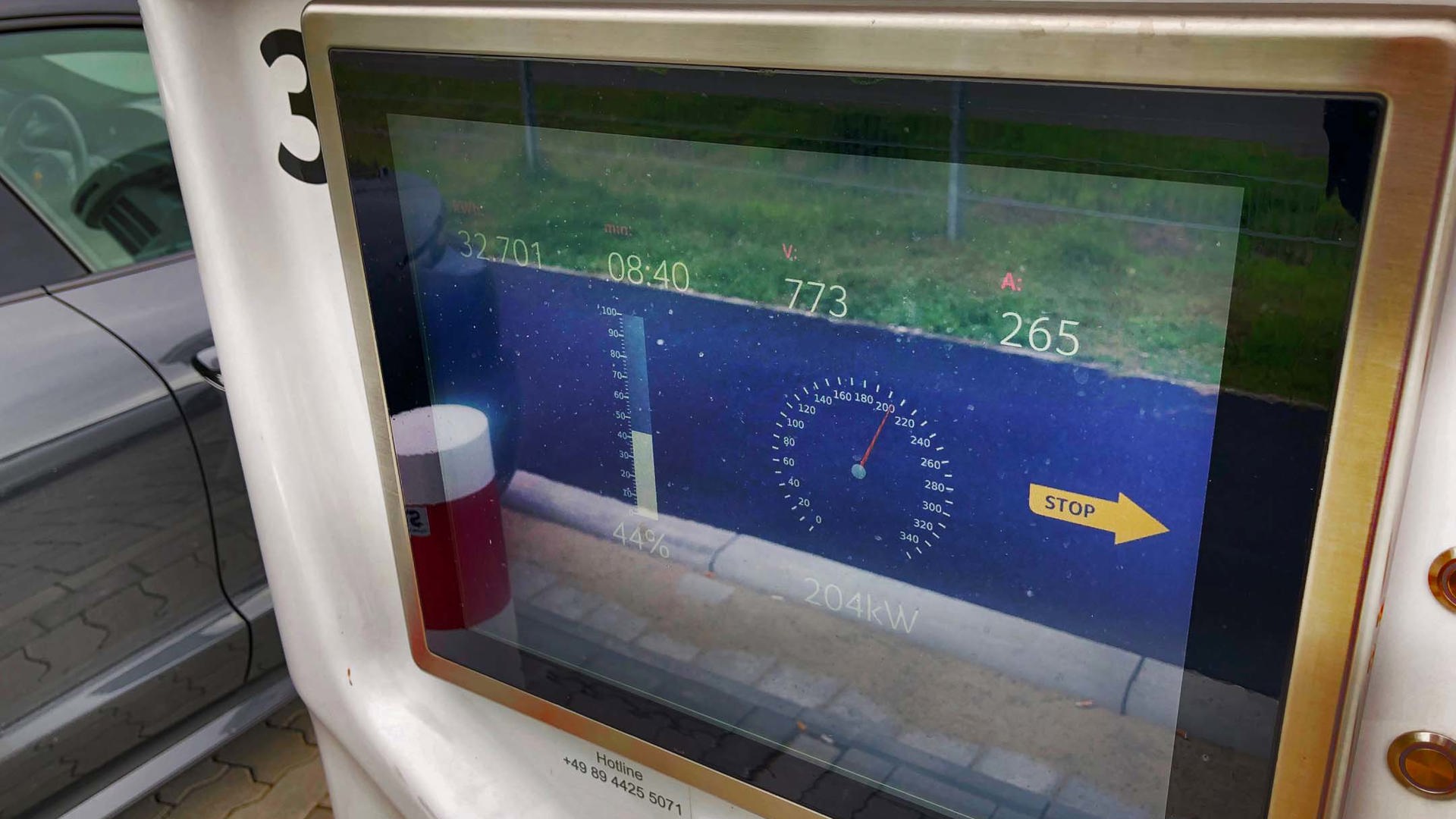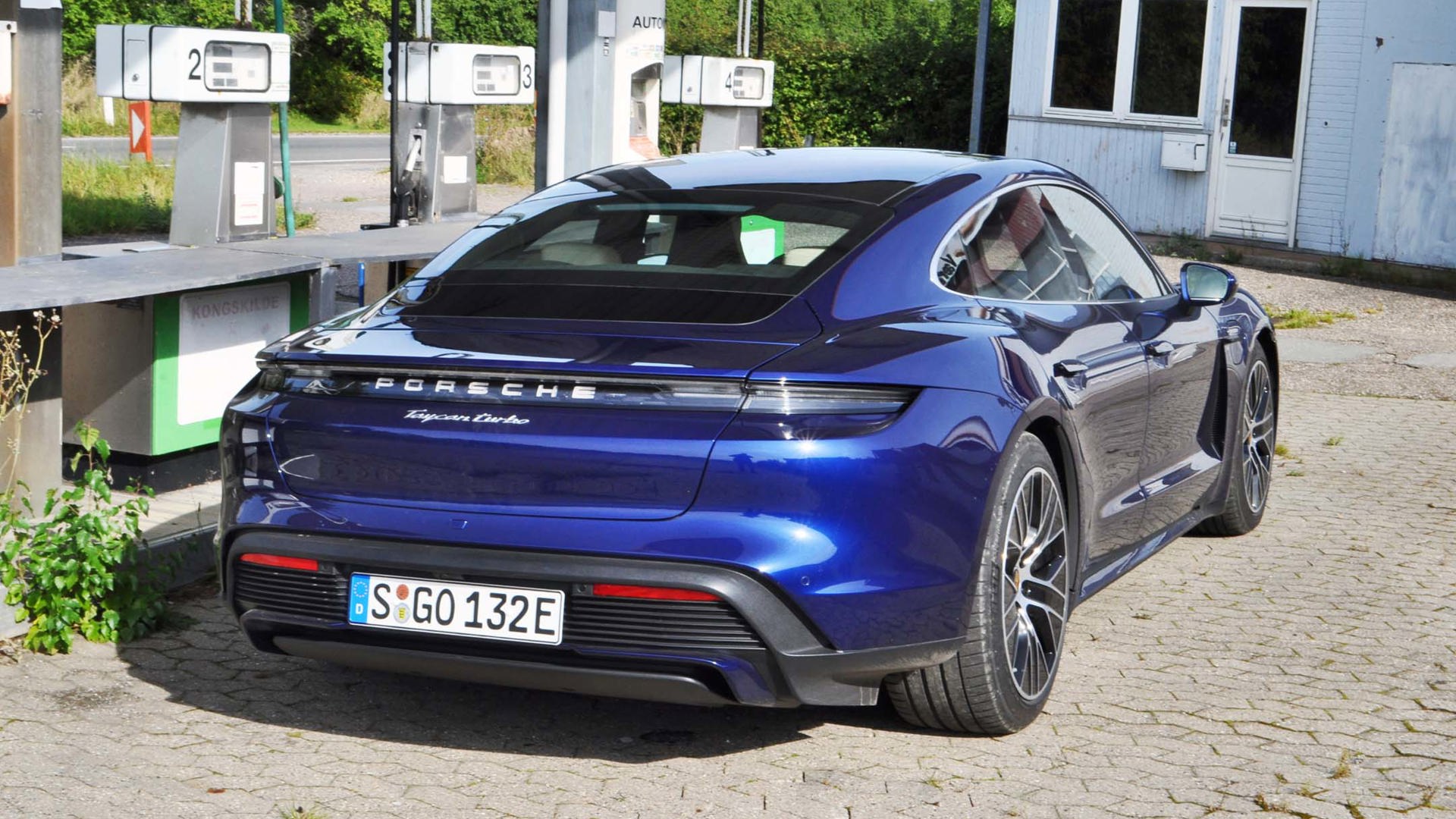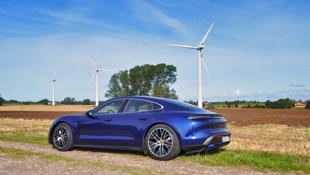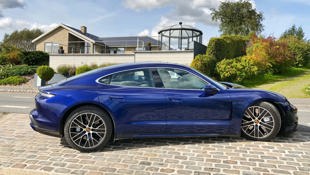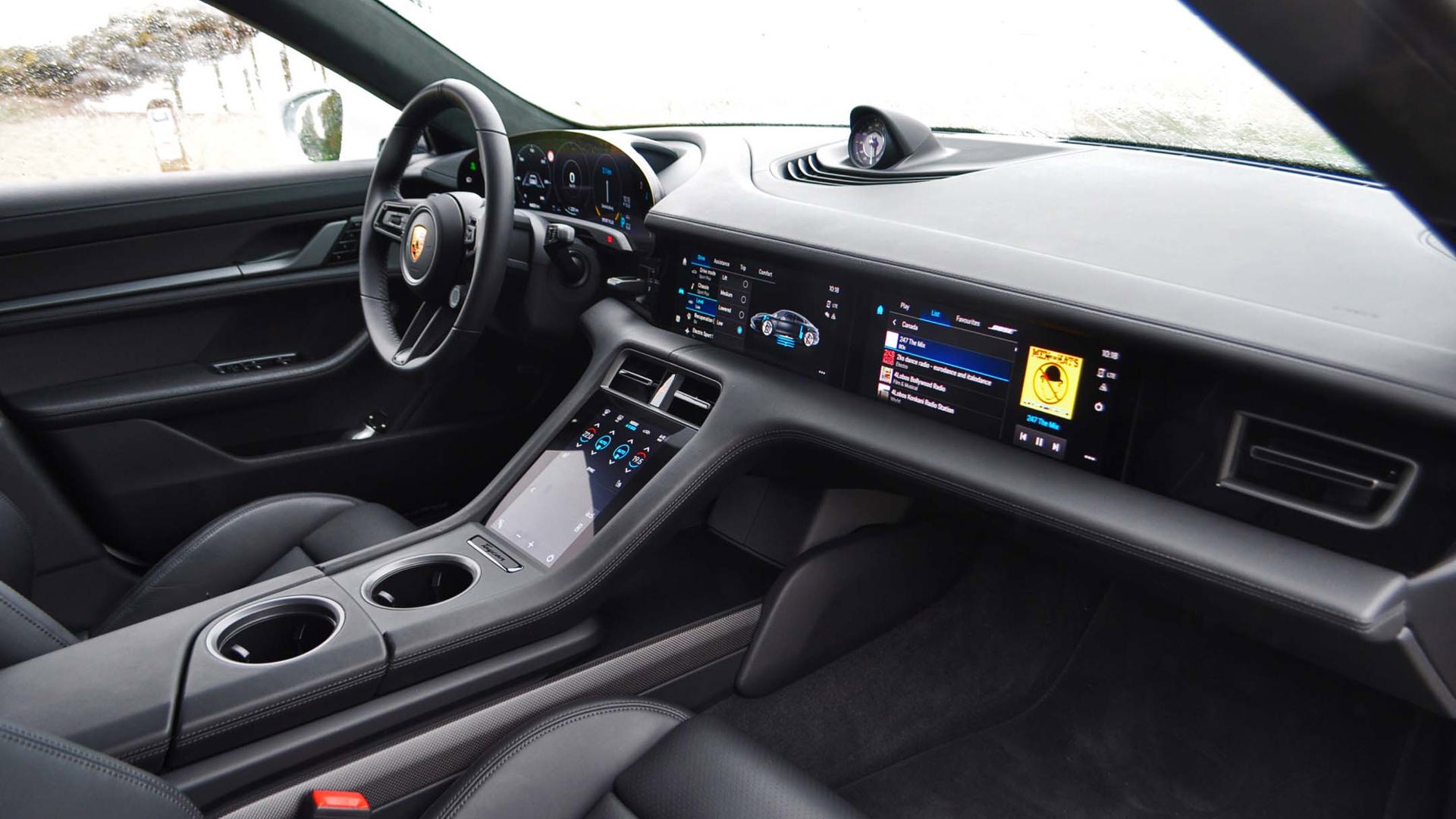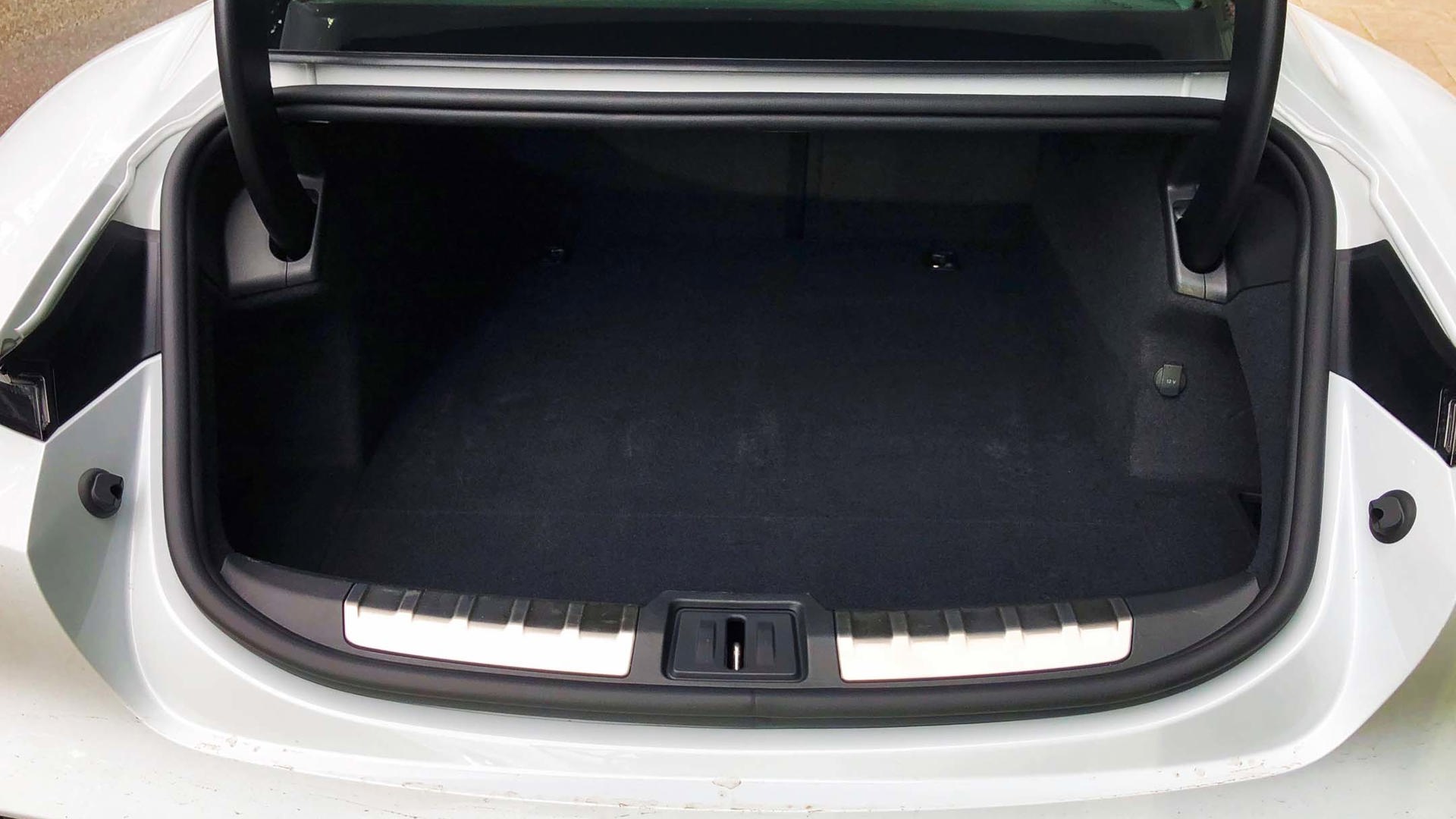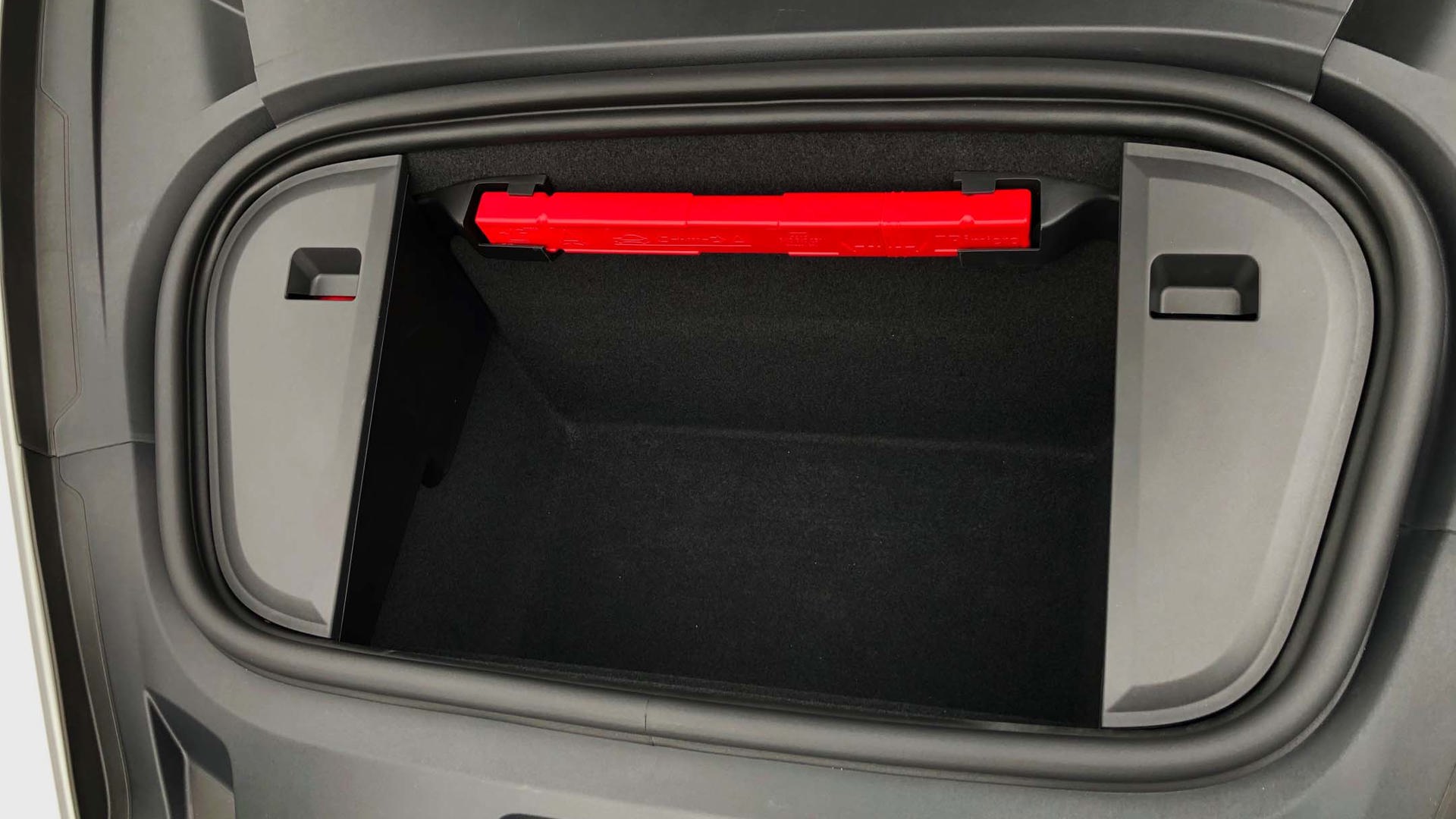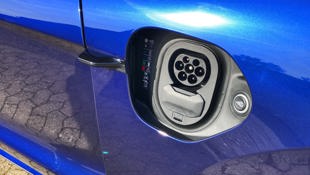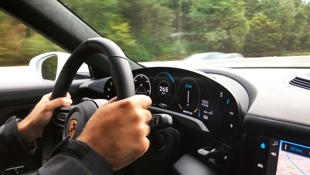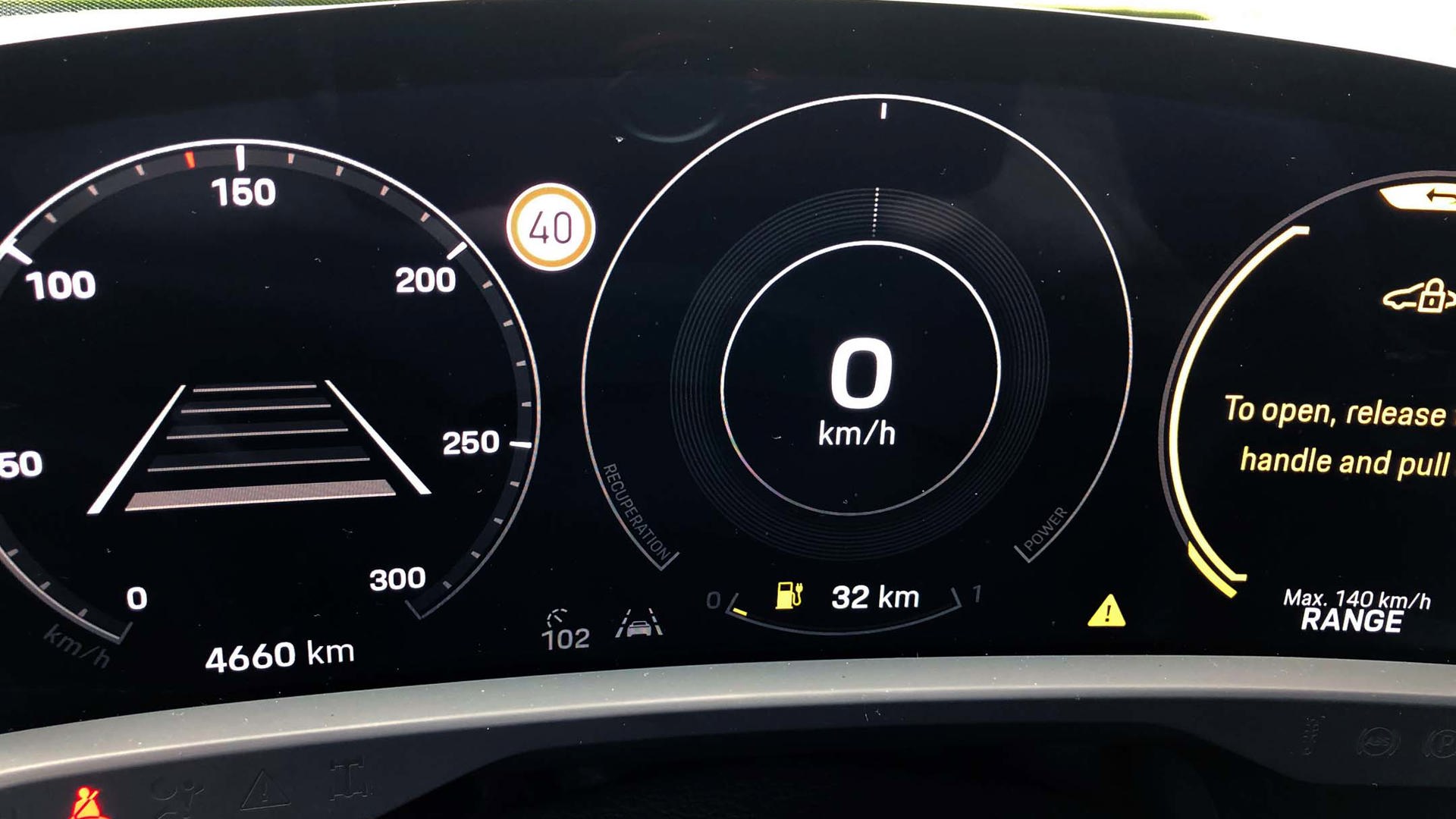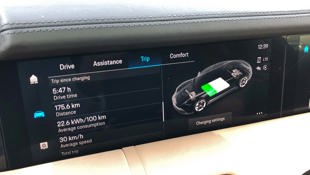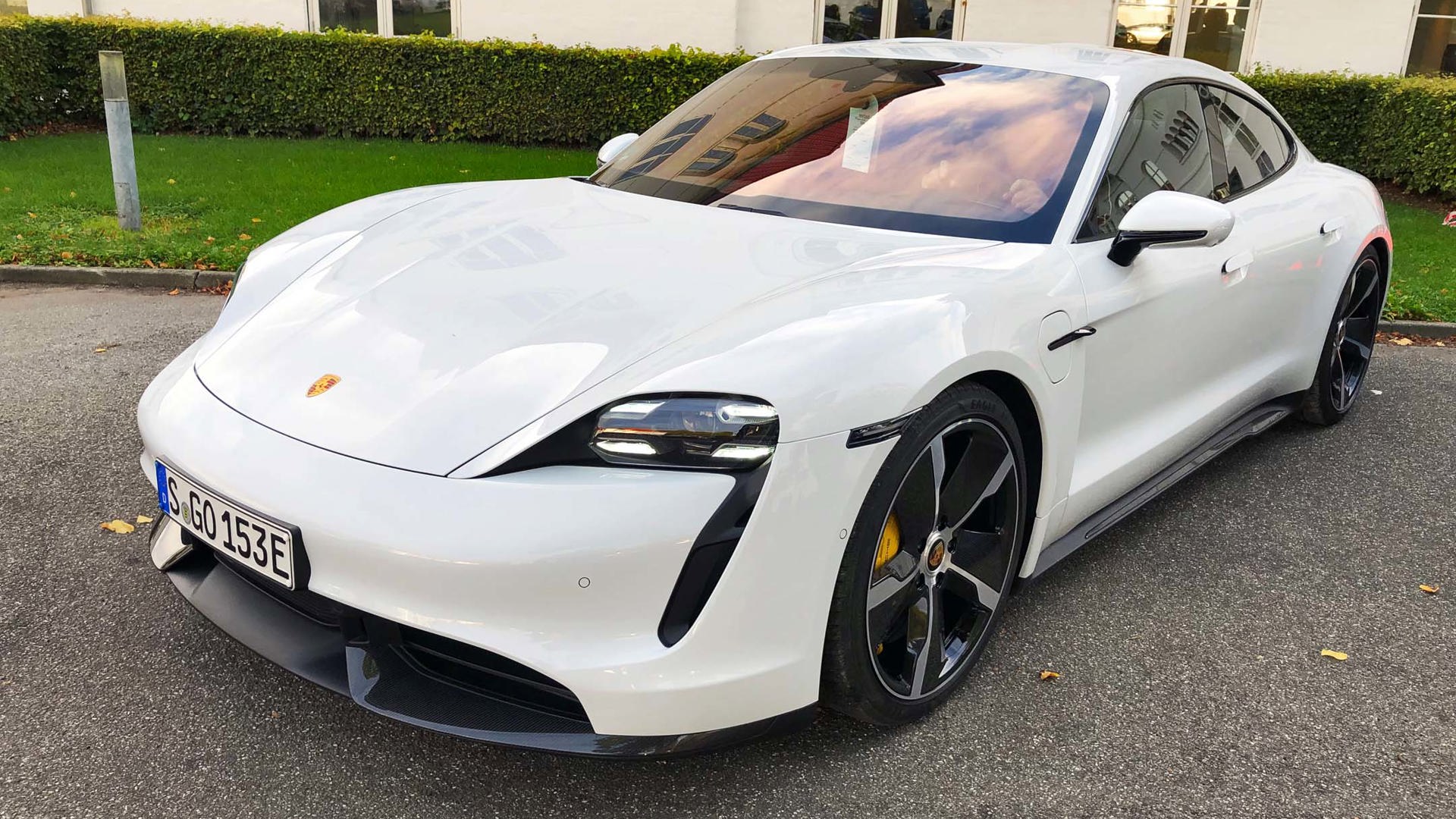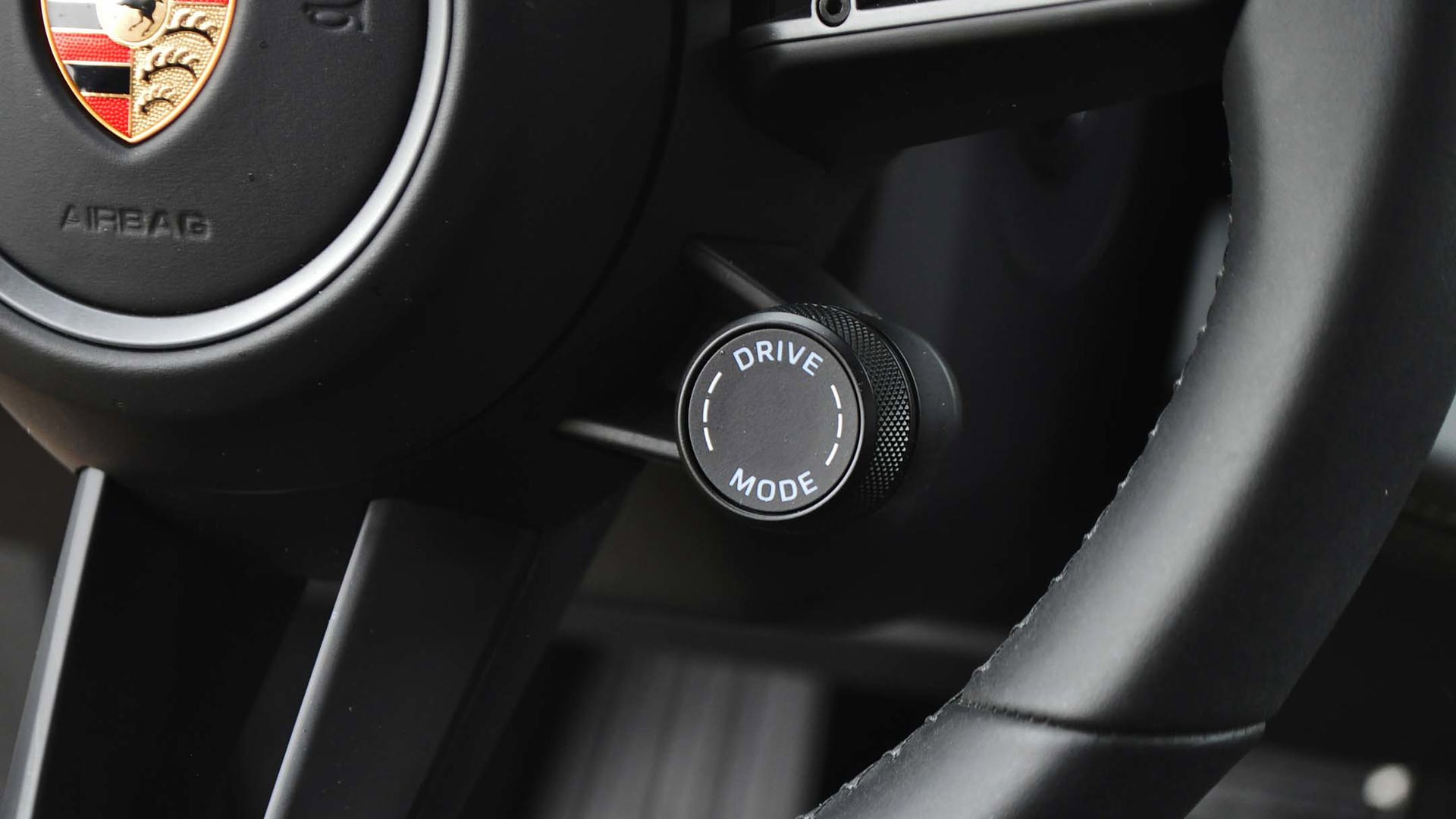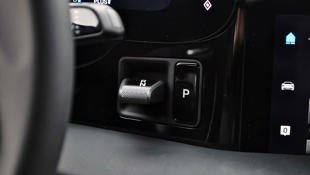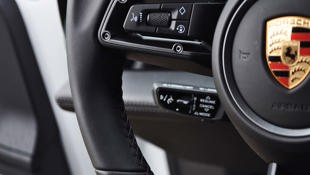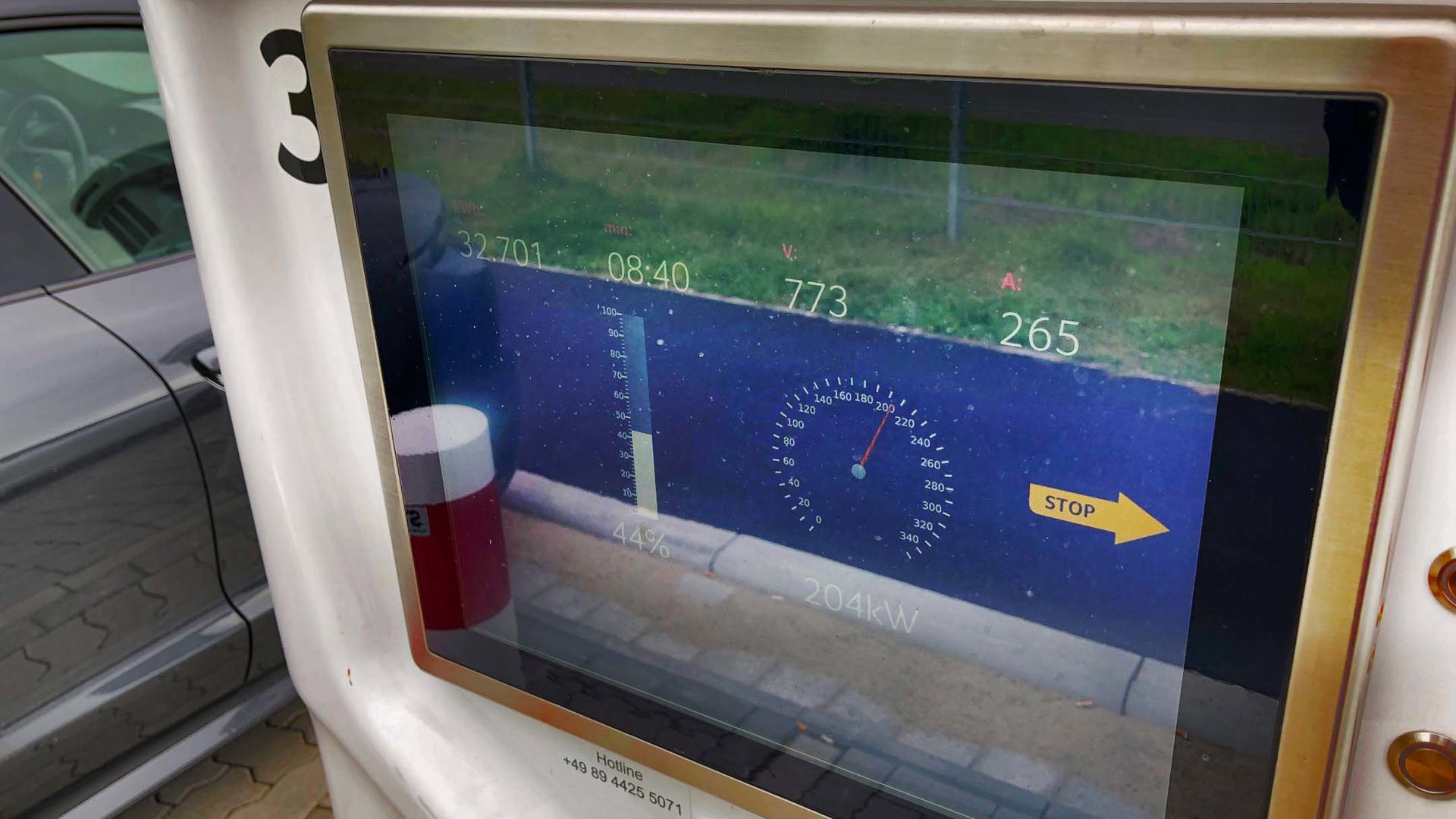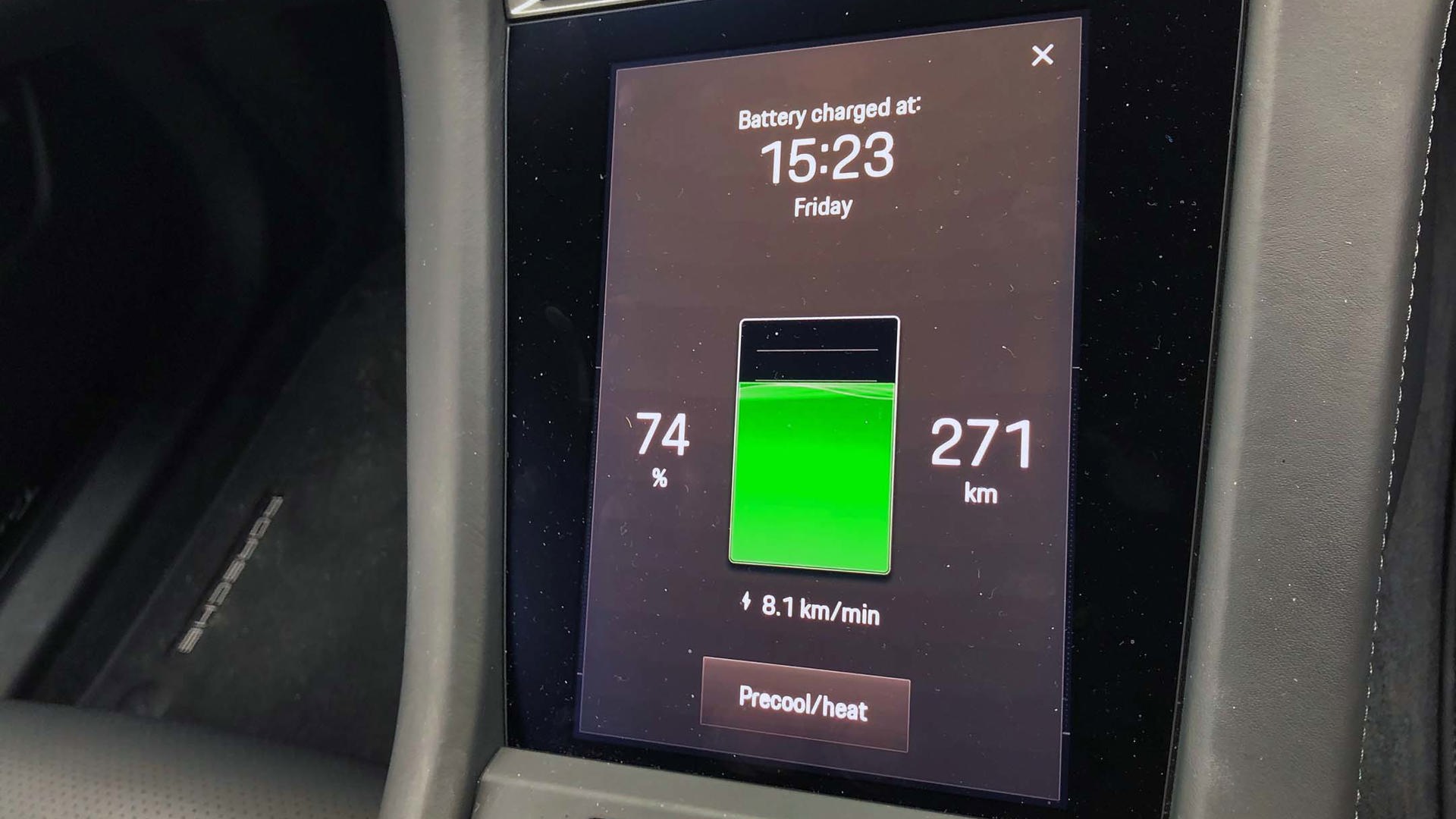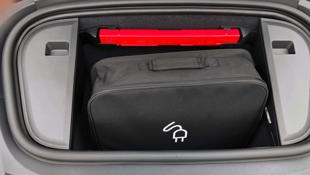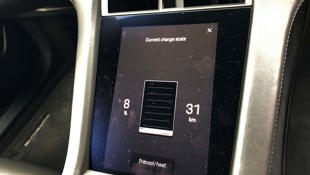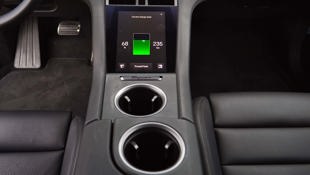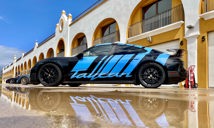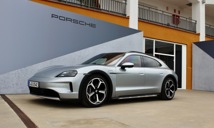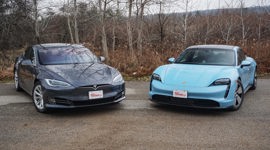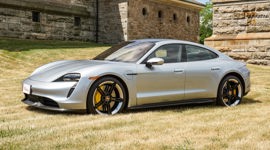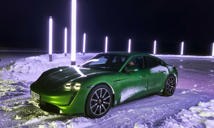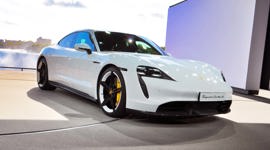HAMBURG, Germany – Porsche’s latest sports car makes no engine noise whatsoever. Even flying along at an indicated 266 km/h on the Autobahn.
That’s because there is no engine in the 2020 Porsche Taycan, despite what its Turbo moniker implies. Nope, it’s just two hugely powerful electric motors, front and rear, that explosively propel Porsche’s all-new four-door sports car forward. That’s forward in both body and in brand, because it’s the first all-electric Porsche the company has ever produced. Which Porsche itself admits is a huge risk for the traditionally conservative German sports car brand.
This is a multi-billion-dollar acknowledgement that Porsche sees Tesla and their all-electric vehicles as a serious threat to their business.
Keep in mind, there were Porsche purists who howled when their storied 911 moved on from air-cooling in the late ’90s. Then more outrage still, when the company jumped into the sport-utility vehicle market with the Cayenne. Now, Porsche has recently confirmed that it will spend six billion euros on all-electric vehicle development by 2022; with less expensive (and less powerful) versions of the Taycan to start production by the end of this year at its new Zuffenhausen plant, as well as a Taycan Cross Turismo sport wagon model coming by the end of 2020.
Sure, some of those development dollars will likely be pooled with other Volkswagen Group efforts; but for a company with only five vehicles lines, adding a sixth – at a cost of six billion euros – could easily land both the brand and parent company in financial hot water. So there’s a major imperative to make these new – in every sense of the word – vehicles as compelling as possible, yet true to the successful Porsche formula that has translated so well to other vehicle types.
Taycan Turbo looks like four-door 911, and feels like it inside
In person, the low-slung Taycan looks like a four-door 911, with a dramatically curvy roofline as well as muscular rear fenders that announce its purpose as a sporting machine, no matter the door count. Inside, it feels notably more snug than a Model S or a Panamera, with a restricted view out the rear that also is more reminiscent of a sports car than a family-hauling luxury sedan. That sloping rear roofline also means that climbing into the rear seat is a bit more of a challenge than in most sedans, with a couple of less-flexible folks on our drive not even wanting to attempt it.
But once inside, those two rear seats are surprisingly roomy, with decent headroom thanks to their slightly lower placement compared to the front seats. To avoid a painful knees-up seating position, Porsche carved the shape of the underfloor-mounted battery to create a “foot garage”, as they dubbed it, which allowed my 5'11" frame to fit cozily but well, with headroom to spare and thighs relatively parallel to the floor. There’s a lot more room back there than in another super-high-performance sedan, the Aston Martin Rapide; but considering the Taycan’s overall “four-door coupe” shape as well as dynamic intent, I find the Aston Martin a closer comparison than the more visually demure Model S. And sadly, the Taycan cleaves closer in price to the $200,000-plus Rapide than the Tesla as well, at least for the Taycan Turbo models.
Inside, there are no buttons or dials to be found anywhere, just three screens: in front of the driver instead of gauges, in between the front occupants instead of climate controls, and above it instead of an instrument panel. There’s also an option fourth screen in front of the passenger. Navigation, audio, and phone functions can be moved around as desired. Not sure I’m crazy about allowing the passenger full stereo control, but it’s great to let them to look up directions and adjust the navigation. We did a thorough rundown of the unique interior of the Taycan here, but in practice over two days, we found that the interior may not be as ergonomically easy to use as one with a rotary controller knob, or a traditional shifter instead of the dash-mounted lever to the right of the Taycan's steering wheel, but you get used to it soon enough.
Two things we really missed though: the first was shift paddles, which provide some driver involvement in other automatic supercars, and extra re-generation in other EVs. The other is the possibility for one-pedal driving, common to most other BEVs and popular for both convenient city driving as well as fine cornering adjustments in enthusiastic driving. Porsche decided to largely let the Taycan coast when you lift off the accelerator, though there is a circled battery button on the left spoke of the steering wheel that allows for extra power recuperation when you lift off the throttle, and just slight retardation of speed without touching the brakes before powering up the regen upon hitting the brakes; there's also a battery Auto mode, which allows for extra recuperation by automatically slowing you down based on the Taycan's forward-facing cameras, even if you're not using cruise control.
With no engine up front, there's room for a deep cargo bay in the frunk. The Taycan comes with a large charging cable taking up much of the frunk's 81 litres of space, though owners in North America will likely ditch it on long drives in favour of cargo room - the large 93 kWh lithium-ion battery of the Taycan Turbo means owners will want to charge up much faster using Level 2 or Level 3 chargers regardless. The rear trunk is larger at 366 litres, but is still small enough to remind you that this is a performance vehicle first, and practical luxury sedan second.
Pricier Taycans coming first, in Porsche tradition
The Taycan Turbo starts at $173,900 in Canada, with the Taycan Turbo S starting at $213,900, both of which are considerably higher than a top-end Model S P100D with the Ludicrous Performance package. Porsche Canada hasn’t specified when exactly the Taycan will arrive, but has confirmed it will be in the first half of 2020.
Given that production of non-Turbo models will begin by the end of 2019, it’s possible that the Taycan’s cost of entry could drop soon after the Turbo’s arrival on our shores. As with Porsche’s other models, it will likely still be sold at a premium against its rivals, in this case the Model S and… nothing else.
Which also speaks to the Taycan’s significance for the “mainstream” auto industry, in that this is a multi-billion-dollar acknowledgement that Porsche sees Tesla and their all-electric vehicles as a serious threat to their business. And perhaps most importantly, that even the wealthiest enthusiast-oriented Porsche consumers will want electric vehicles: if not now, then when they see and experience the difference.
More zoomy sports car than luxury sedan on the road
After being seriously impressed by various Teslas and their Ludicrous mode acceleration, I was probably more excited to drive this Porsche than any other car in the last five years. Our group of drivers was particularly lucky, because we would be the first drivers outside of Porsche to be able to drive the Taycan Turbos on the Autobahn – with parts of it having no speed limits. But first, we had to do some gut-busting standing start acceleration runs, because that’s what performance electric cars are known for – and in particular, Teslas.
Porsche quotes a 0–100 km/h time of 3.2 seconds for the Turbo, and a missile-like 2.8 seconds for the Taycan Turbo S, which is basically neck-and-neck with the fastest Model S (okay, a couple tenths behind, but more repeatable, Porsche insists). And roughly equivalent to current high-end 911 Turbo models.
And it’s super easy to kick in the standard Launch Control: brake down with your left foot, accelerator down with your right, spot the LC active light, then let go, and hang on.
The Turbo S tackles you back into your seat, while the futuristic zooming sound that comes on in Sport Plus mode gives your ears an addictive sound to go with those crazy 750 horsepower and 774 lb-ft of torque. Mind you, because the Taycan’s body stays flatter upon launching than in the fastest Model S, the shocking acceleration rush may be just a sliver less neck-snapping than the more luxury-oriented Tesla.
The Taycan Turbo’s two motors can pump out up to 670 hp, and 627 lb-ft of torque on “Overboost” mode, enabled by Launch Control. Outside of Overboost mode, both Taycans are rated at closer to 616 hp.
Multiple driving modes can be selected with a familiar Porsche dial on the steering wheel, with Sport and Sport Plus leading to increasingly flatter and louder behaviour. Louder in an EV? Yes, there is a notable “zoomy” sound coming from the motors when accelerating hard in a Taycan Turbo, and that sound is amplified in Sport Plus mode. Or if you really love it, you can have it amplified at all times, while the Individual mode allows for pre-selection of your favourite settings.
There’s also a new Range mode that maximizes how far you can travel on a charge. Range is officially rated up to 450 km for the Taycan Turbo, and 412 for the Turbo S, thanks to the latter's larger 21-inch wheels (versus the Turbo's 20s). But both of those range figures are on the optimistic WLTP scale, which tend to be at least 10–20 percent higher than EPA numbers, which more closely reflect real-world usage.
In Sport Plus mode especially, the Taycan Turbo and Turbo S handle almost identically: as purposeful, responsive road-carving machines, almost mid-engine-like in the lack of body roll and instant turn-in. Porsche has done a masterful job in keeping its steering response quick but not darty on the highway, and just like the mid-engine Boxster and Cayman siblings, the Taycan Turbo S loves highway ramps, its 2,305 kg evenly distributed across its 4,953mm body, which helps keep it balanced in a way that contrasts with the tippy and more luxury-oriented Model S. There's standard active suspension (PASM) which adjusts the dampers and spring rates at each wheel constantly while reading driver inputs and road surfaces, while a three-stage air suspension raises the car's aerodynamic body (an industry-leading 0.22 coefficient of drag for the Taycan Turbo) at parking lot speeds or on command, or lowers the car up to 22 millimetres to optimize stability and ultimate range.
When we got it on the Autobahn, it was super quiet even at 130 km/h, as most all-electrics are. But when those “no limit” signs appeared, we took advantage its supercar-like acceleration, right up to 260 km/h. At that point, it crept toward its top speed of 270 km/h – we got it up to an indicated 266 km/h before we had to back off for traffic. When a city limit 120 km/h sign appeared unexpectedly at over 220 km/h, heavy braking brought on stable and rapid deceleration, with less rear-end wiggle than a 911 Turbo in similar circumstances. And though we didn't have a chance to try it, Porsche insisted that both its max acceleration and braking capabilities were designed to be repeatable and consistent, another (of many) clear digs at Tesla.
We did a thorough technical deep dive of the Taycan's all-wheel drive dual-motor powertrain here, including its unique two-speed transmission in the rear, meant to help achieve gut-busting acceleration plus more efficient electricity consumption on the highway, as well as a higher top speed.
Industry-leading speed while stationary charging
Besides top speed, the Taycan also leads the all-electric pack in terms of fast-charging speed – given the right equipment, that is. We stopped at these high-powered chargers along our route on both days of our drive – which started in Copenhagen, through Denmark, and onto northern Germany to end in Hamburg. Part of the pan-European Ionity network, these chargers feature liquid-cooled cables, and can output electrons at up to 350 kW. The Taycan can accept up to 270 kW, which is fast enough to add 100 km of range in five minutes (Taycan Turbo) or 5.5 in the Turbo S. Porsche says a Taycan driver can charge from five to 80 percent full at one of these chargers in just over 22 minutes, in ideal conditions.
Our own experience backed up that claim: A quick charge from eight percent to 74 took us 18 minutes before we unplugged. This took our Turbo S from an estimated range of 31 km, to 271 km. Doing the math suggests a full charge would net roughly 340 km, or well below the Turbo S’ rated range – though we were doing serious Autobahn speeds, which likely affected its range prediction.
Tesla has an advantage in Canada in that it already has an extensive Supercharger charging network. So even if the charging stations currently only provide a maximum of 150 kW, there are a lot more of them. In contrast, the first Electrify Canada network charging location will open this week, and only one out of the four charge points there will offer this full 350 kW charging speed. The others all top out at 150 kW, but are available for use by all electric vehicles, versus Tesla’s proprietary Supercharger, which only serves its own cars. Electrify Canada currently has plans for a total of 32 charging locations, mostly in provinces that offered their own EV purchase rebate – Ontario, British Columbia, and Quebec – as well as Alberta.
Conclusion
The 2020 Porsche Taycan feels like a statement, that Porsche wants enthusiasts to take electric vehicles seriously as performance machines. While Tesla may have shown that EVs don’t have to be boring commuter cars – and definitely accelerated the industry’s push into all-electric vehicles – the Taycan is Porsche’s aggressive if pricey response that it will protect its performance credentials against all rivals. No matter how many billions and how radical the changes necessary.
